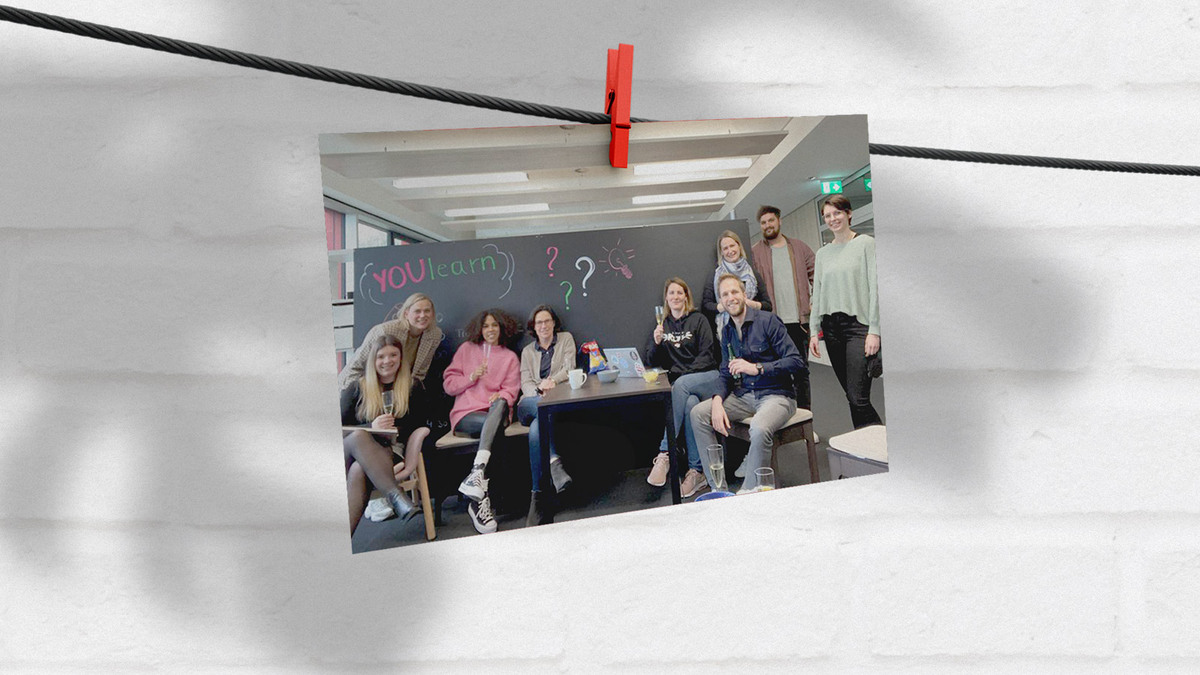
New Work: Communication and Collaboration as Keys to Success
Why internal communication is fast becoming a core element of our hybrid work model here at imc
Hybrid working has transformed how people at imc interact with one another. While some employees prefer to work in the office on certain days, others prefer to work remotely from home – in some cases from a different country or even a different time zone. And as people head out the office door, those chance encounters at the water cooler and shared coffee breaks start to fall by the wayside. We still want to share and connect with one another of course – we just need new ways of making that happen.
High time, then, to put in place some global communication and collaboration standards to ensure that the collaboration continues to work successfully. This latest move! article presents the formats we’ve come up for this and outlines the specials that the individual locations have already developed.

The golden rules for successful communication and collaboration
Our task was to review existing strategies and create new interaction formats to put our hybrid work model on a global and more professional footing while preserving our open corporate culture.
It was clear that the success of the hybrid work model hinged in part on the introduction of harmonised (quality) standards as the basis for day-to-day communication and collaboration.
We set to work developing global standards that would facilitate further creative forms of collaboration and hence opportunities for sharing and exchange. The result? Our Communication & Collaboration Guidelines. The guidelines contain ground rules for communication, hints on meeting netiquette, social media playbooks and recommended best practices. Their purpose is to guide us in our day-to-day shared work and dealings with one another. The guidelines also set globally applicable quantitative and qualitative standards for communication and collaboration at imc.
Inspirational speakers discuss hot topics: Our imcINSPIRE sessions
As well as standards, we wanted to create formats that both bring imc employees together and create real added value.
And so were born our imcINSPIRE sessions – short, punchy learning nuggets that employees can do in the time it takes to have a coffee. The sessions cover a wide range of fascinating topics, so there’s something for every imc employee. So far, we’ve had nuggets by the internal IT people on the proper use of commonly used collaboration tools like MS Teams, SharePoint, and OneDrive, plus all manner of sessions on subjects ranging from diversity and personal branding to effective time management to team building. Based on the positive feedback from our colleagues, we will definitely continue to use and develop these sorts of formats.
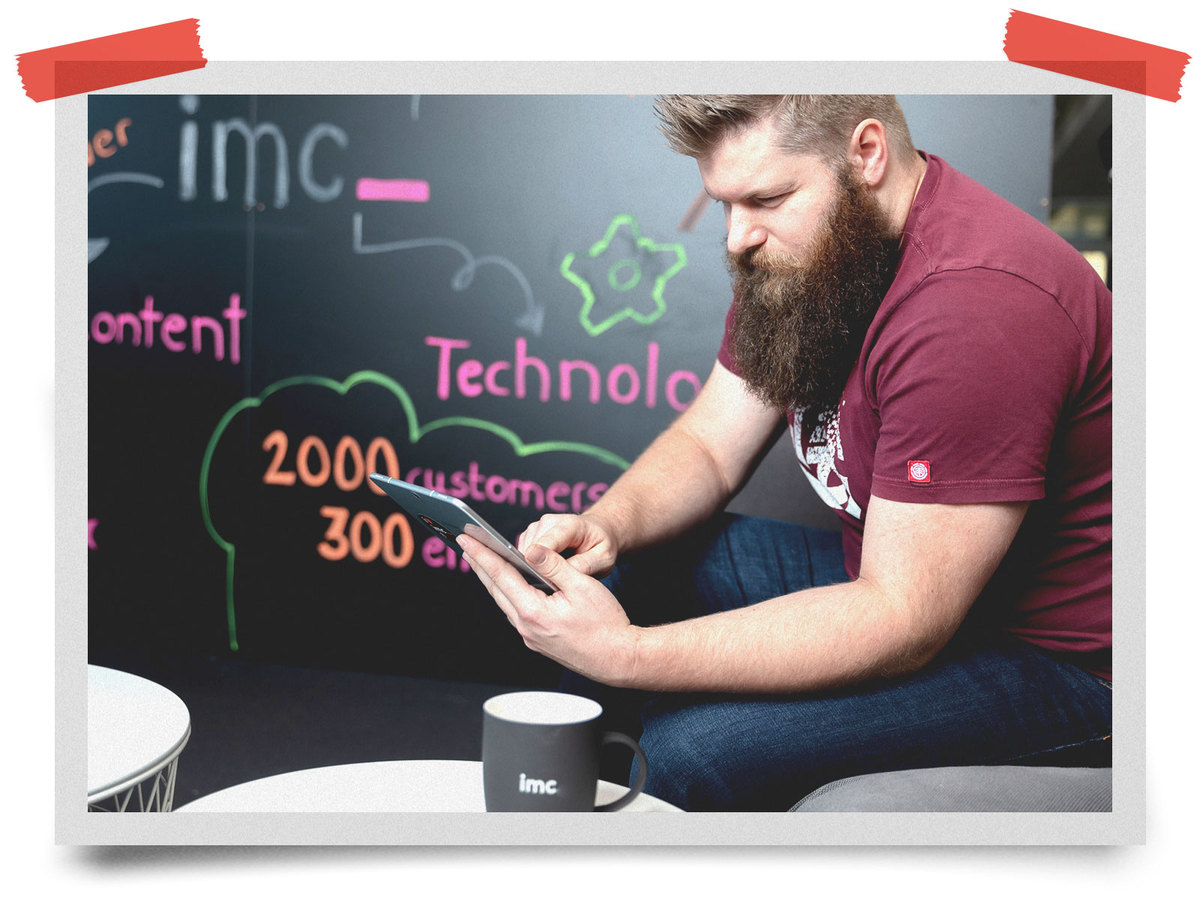
Welcome to imcUNITE
The standards and guidelines were all well and good, but there was something else that no effective internal collaboration system can be without: an informal communication channel for all employees. We had already set up a channel for this purpose, but hardly anyone knew about it, let alone used it, so we gave it a complete revamp and breathed new life into it. The result is imcUNITE.
Our aim with this internal MS Teams channel is to bolster informal communication at imc so as to break up team silos and build an active imc community where everyone supports each other. The idea is that it should be quick and easy for all imc employees to keep up to date with current internal news and developments. Of course, the channel needs to be fun, too, which is why the relevant community managers regularly run a range of engaging formats and interactive specials, such as Christmas quizzes and GIF challenges.
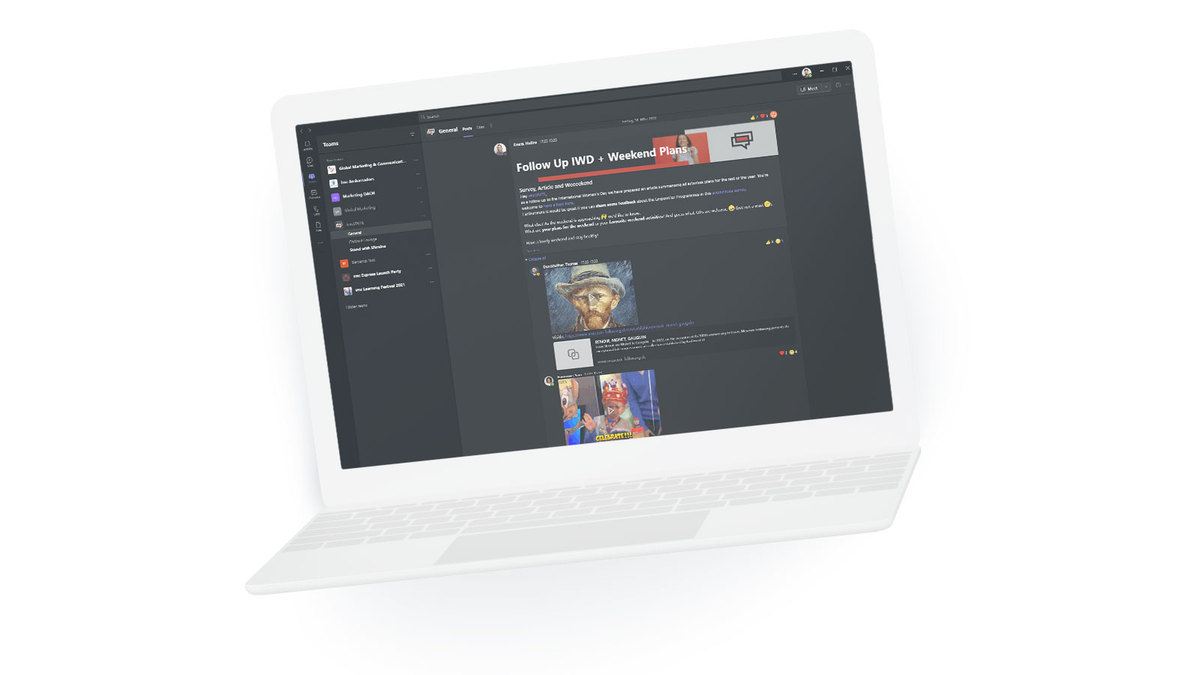
Team Switzerland: When office day becomes a major highlight
Our colleagues in Zurich head into the office every Tuesday in a shining example of how “office day” can go from a normal working day to the highlight of the week. Being on site offers valuable opportunities for informal chats with workmates during breaks. On office days, employees are encouraged to keep off-site meetings to a minimum so that they can benefit from on-site exchange and team building.
The icing on the cake is the shared team lunch, which, at the express wish of the team, is always held at a nearby restaurant. “Working at the office, you’re much more in tune with what’s going on than if you’re at home,” says Vildan Ljatifi, a sales consultant in the Zurich office. “Everyone looks forward to office day because it’s the perfect antidote to working from home.”
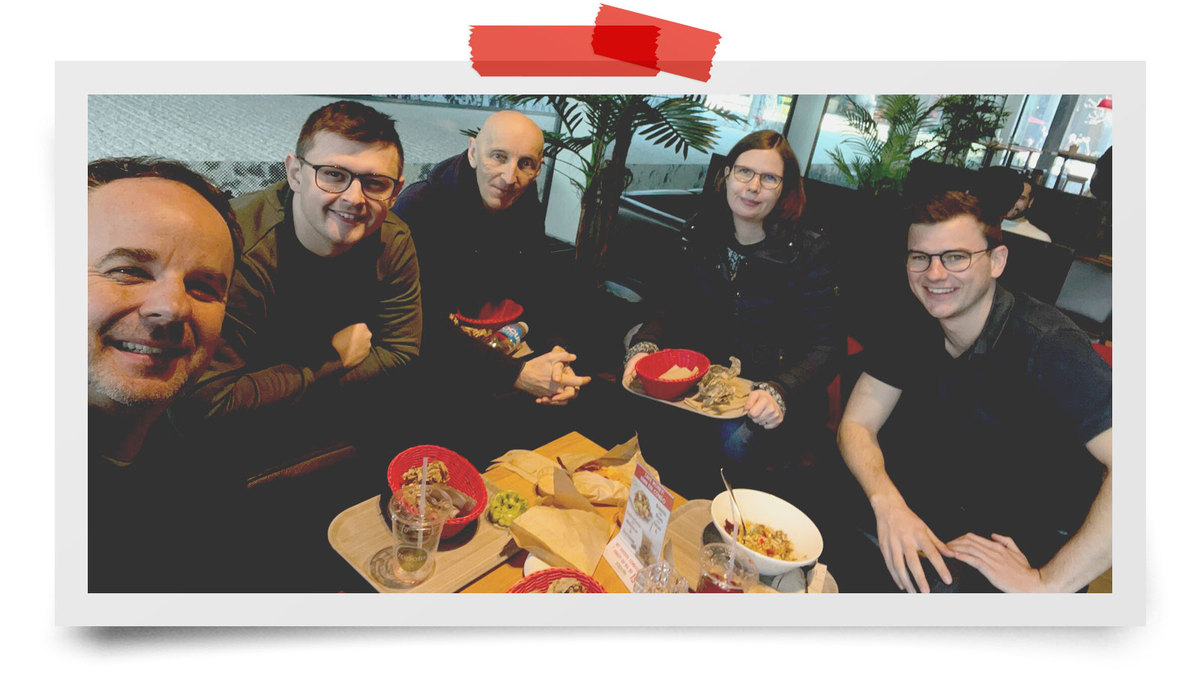
Kaffeeklatsch Ausssie-style
What better way to spend your lunchbreak on a fine day than indulging in coffee and cake with your colleagues at your favourite local cafe? This quintessentially German of pastimes has, it seems, caught on with our Australian team, who have instituted regular Coffee & Cake Meetings.
The idea of these outings is that getting together in a relaxed setting over coffee and tasty treats from the desserts cabinet is a great way to foster informal interaction and dialogue outside of work. “Obviously, it’s also a way of connecting with our company’s German heritage and its ‘coffee and cake’ tradition,” says Tyson Priddle, Director Digital Learning, Australia.
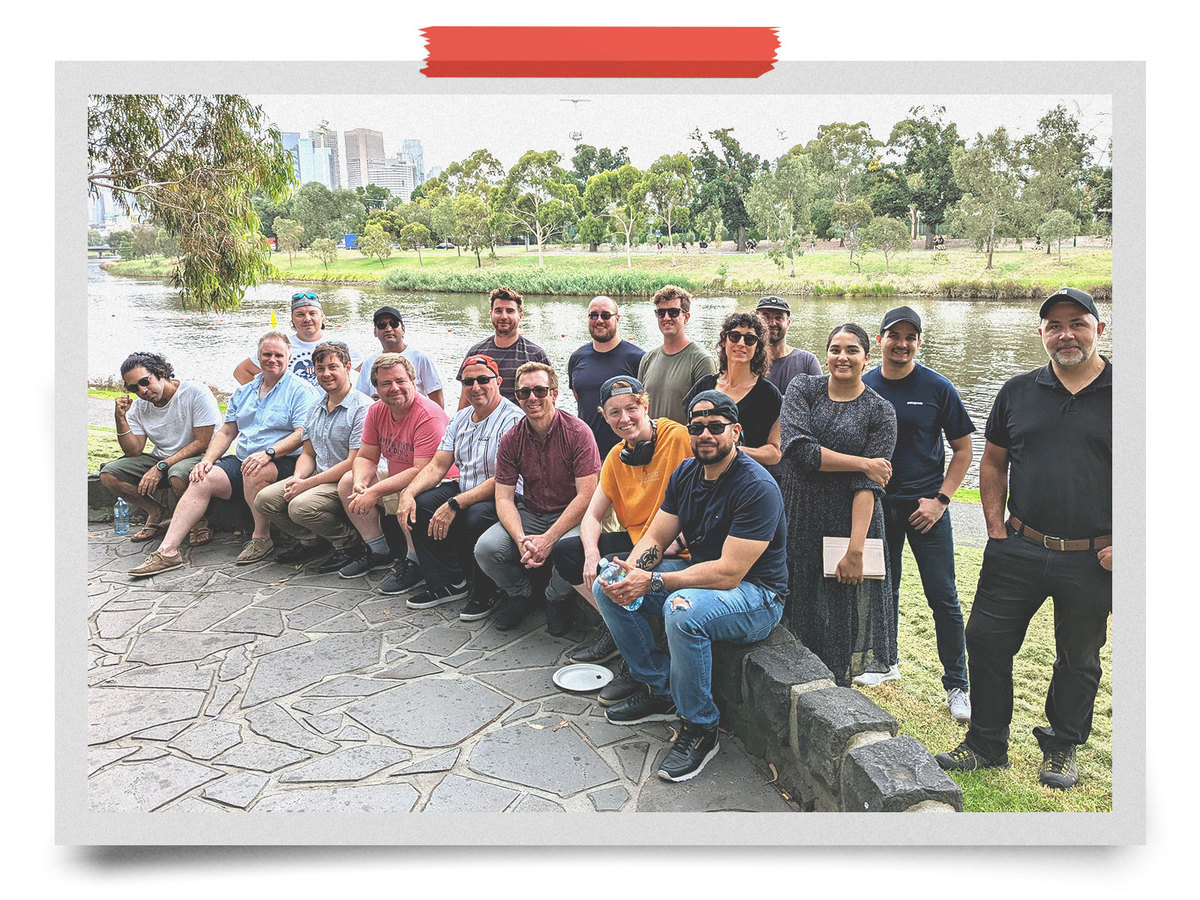
Upskilling and team building with learning days
Team spirit and collaboration are also the name of the game at our headquarters in Saarbrücken. The marketing & newsroom team, for example, holds regular “Youlearn” learning days that provide professional development on self-selected topics. They are also a welcome opportunity to get the whole team together at the office. With everyone in one place, it’s so much easier to disseminate new knowledge – and chat over a shared lunch.
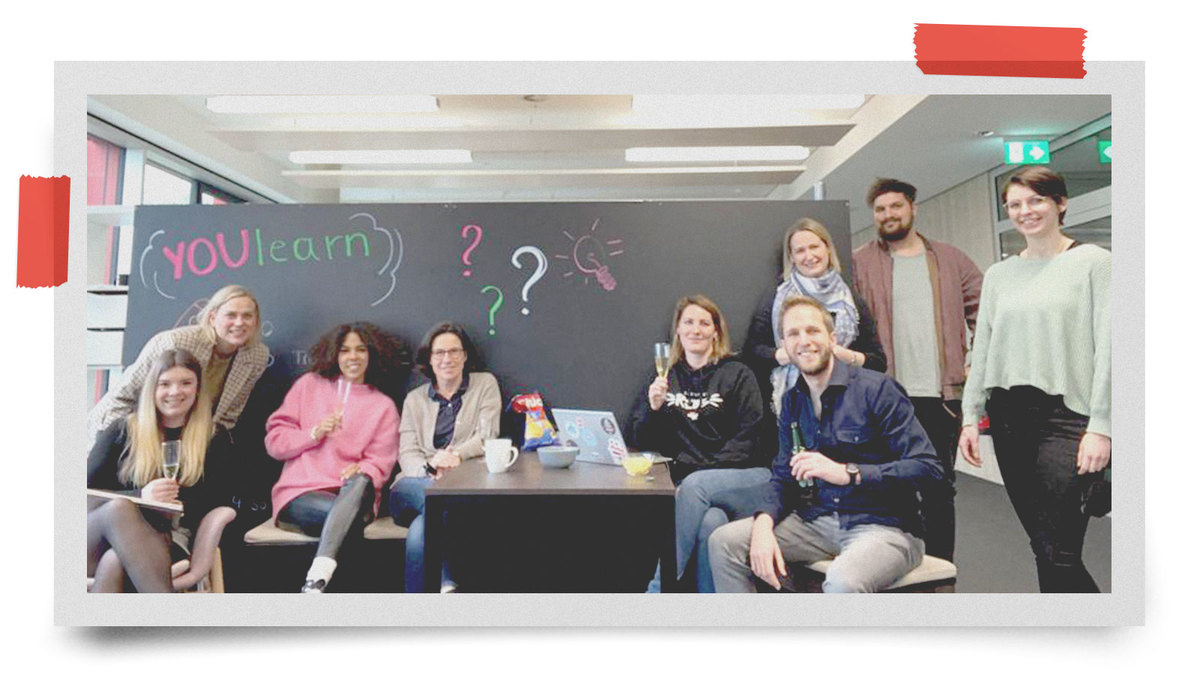
More soon – stay tuned!
As you can see, people at all our individual locations have been working hard to create more opportunities for face-to-face collaboration and interaction. There’s a lot more to be done of course, and we’re pleased to say other teams have already signalled plans to institute their own little rituals and head back into the office more regularly, COVID restrictions permitting. We can’t wait to see what amazing ideas and creative forms of collaboration will take root to keep our imc sense of togetherness alive despite the distance that separates us. Stay tuned!

New work at imc: Shaping the work culture of tomorrow
In the move! interview, we show what New Work looks like at imc and how a shared working environment is designed with the best possible results for everyone.
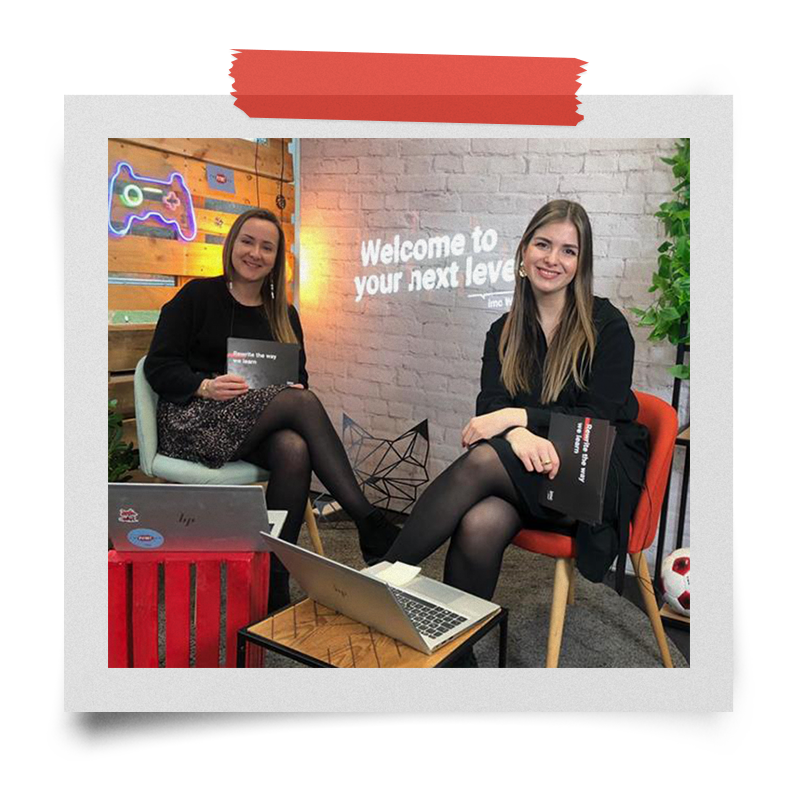
Welcome on board - the new imc onboarding journey
No more boring onboarding processes! We show how we at imc will also create a new welcome culture in the future with New Work.

Contact person
I' ve been working as a permanent member of the imc Marketing & Communication Team since 2021. The mix of creative content creation, social media and online marketing activities excites me the most about my job.
My goal is to inspire people with creative and innovative content and to make the imc brand more tangible.
My passion besides my job? Travelling a lot and discovering the world. I am always happy to receive feedback or suggestions at [email protected]!
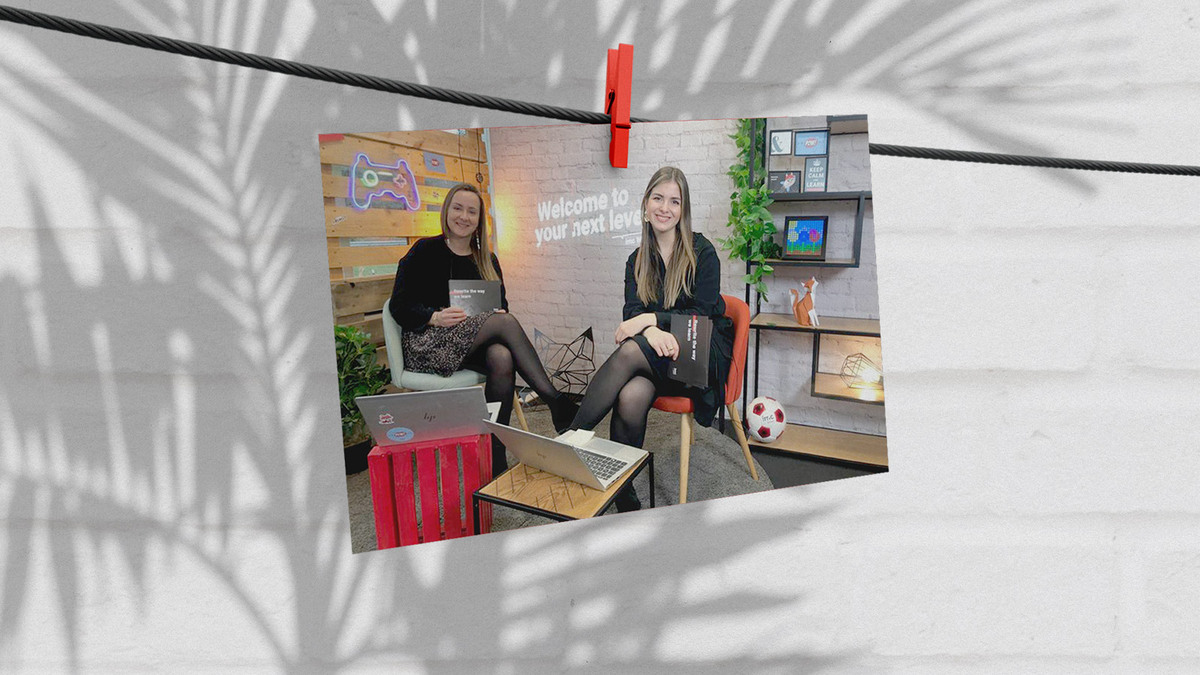
Welcome on board - the new imc onboarding journey
How imc is leveraging new work to create a new culture for welcoming new team members
No more boring onboarding processes! The pandemic has left its mark, and we embarked on a holistic new work approach. Now, it’s time to rethink our onboarding journey as well.
As a digital learning provider committed to creating digital learning experiences, this was a challenge: We had to set a high standard. While we already proved ourselves in many (onboarding) projects,we now had to design and implement a successful process at imc.
Challenge accepted. Hybrid, global and unique – these characteristics were a must for the onboarding journey we wanted to create while integrating gamification elements and, of course, our Learning Suite.
Well, and it should be fun. Quite the wish list.
At the same time, we wanted to move away from pathetic handbooks, boring guidelines, and isolated solutions for individual locations. Having an onboarding journey that inspires and motivates while turning our brand and our brand values into an experience to complement our global processes was important to us.
In our latest move! article, we took a look behind the scenes of the new onboarding programme and present several exclusive highlights.

A different take on onboarding
We all know that exhilarating joy we feel when signing a new employment contract. The days leading up to that first day of work are usually marked by anticipation and excitement.
We were determined to hold onto these positive vibes. Using a hybrid approach was also a key factor. “While the imc team loves digitisation, we strongly believe in human communication. Thus, the journey should not be exclusively digital,” says Kerstin Steffen, Director Brand Strategy at imc.
Claire Raistrick, HR Manager and member of the Onboarding Project Team even goes a step further and sums up the grand objectives: “At imc, we believe that onboarding is an art. Each new employee contributes their uniqueness, as well as huge potential for performance and success. At imc, we create an environment that allows employees to reach their potential. Loosing the energy of a productive employee is a lost opportunity. Loosing a new employee through poor onboarding is criminal.”

Seizing the new opportunity: Welcome to imc!
What exactly can our new recruits expect? “Today, this super-sweet – and personal – welcome message from my team arrived in the post. What a fantastic gesture! Thank you!” Vanessa Steinmann had left this comment on LinkedIn. It is but one of many examples.
At imc, we are confident that welcoming new team members already starts with pre-boarding. That is why we post out a personal greeting and invite our new recruits to our brand-new pre-boarding cockpit. A win-win situation: The new recruit can get a feel for our Learning Suite and start exploring everything they need for a successful start – from welcome videos to our cultural playbook. In addition, our BizQuiz is great fun while playfully offering valuable introductory information on all aspects of imc. Of course, Onboarding Buddy Smarty is always on hand to support the onboarding mission.
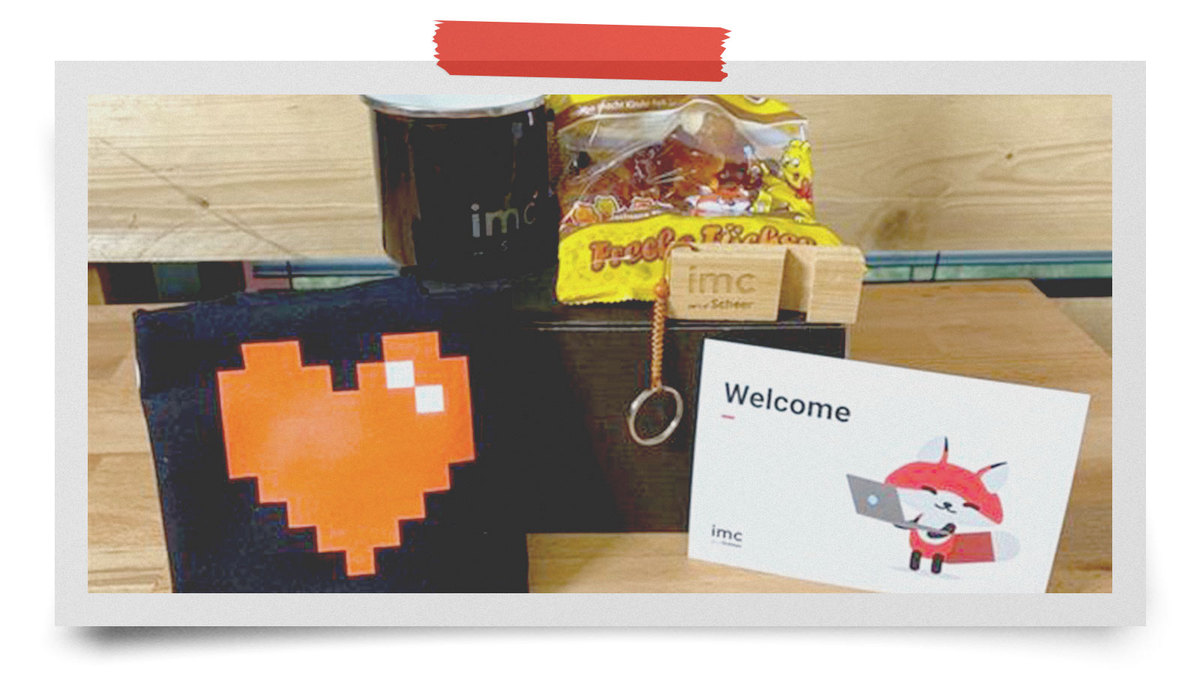
Time for surprises
We came up with a number of specials to ensure that everything goes smooth in the first few days and weeks. The custom-created Welcome Boxes unleashed waves of enthusiasm, delighting both our existing and new team members. Jan Stauder, IT Engineer at imc, claims that everyone loved the fruit-jelly foxes resembling the “smart fox”, a popular German cartoon character. When Claudia Michels started her new role as Corporate Designer, she was over the moon to receive the imc coffee mug and clover seeds with the message stating, “We grow together.”
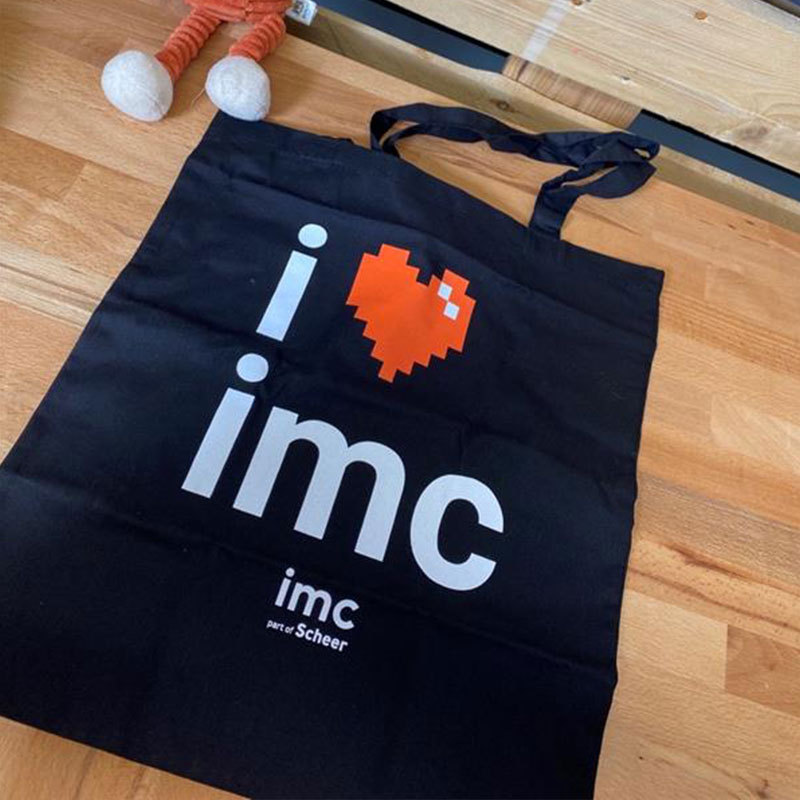
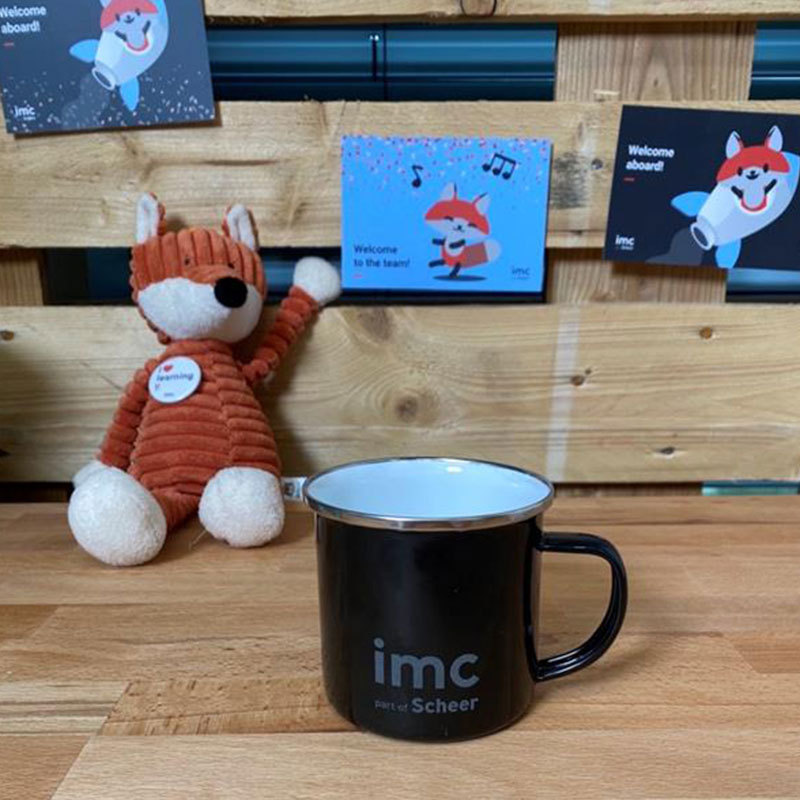
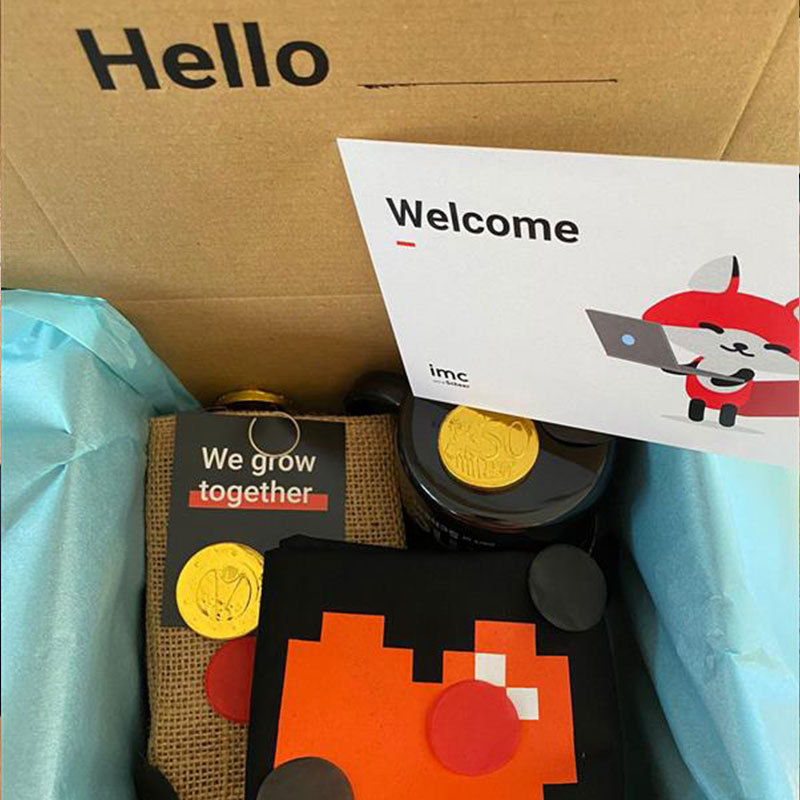
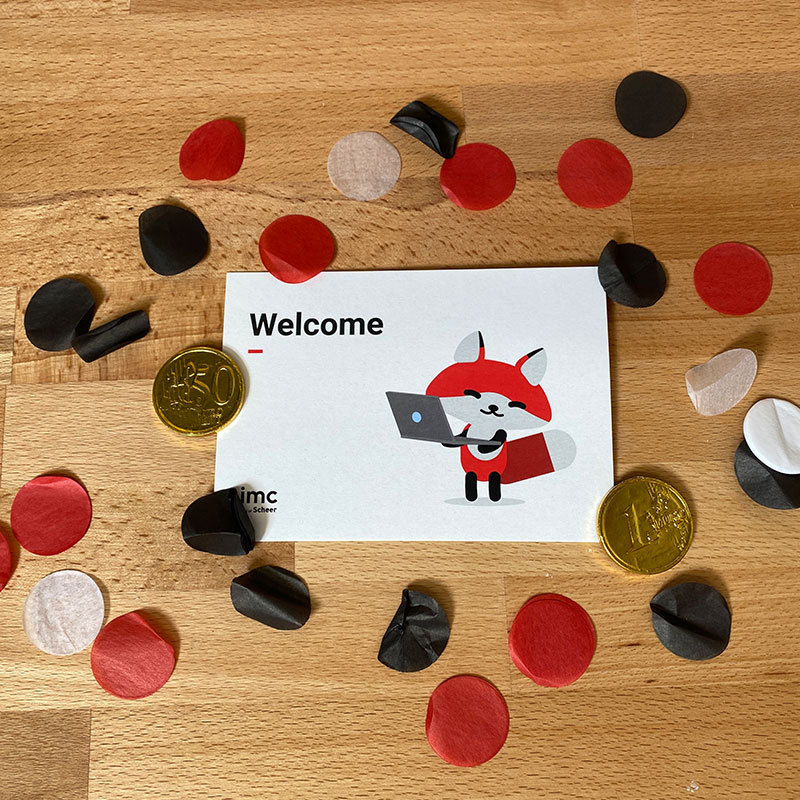


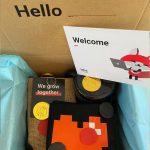

Our new brand training is yet another highlight in our onboarding programme. We already created this for several customers. Now, it has become a key component for our own journey. The objective: Going beyond understanding the corporate brand and diving into a full experience. In this gamified course, our mascot Smarty takes the new colleague by the hand to discover imc brand identity together.
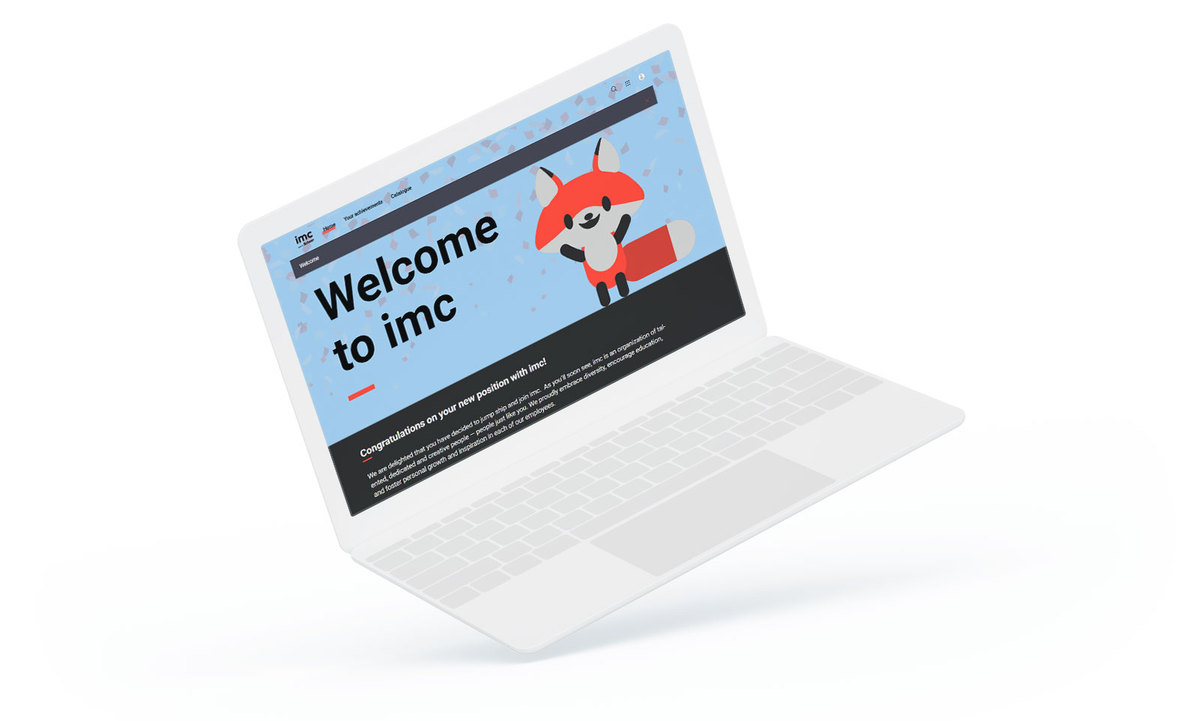
Entertainment and networking: Our Welcome Days
How do you beat this? We went another step further with our hybrid Welcome Days. Our Welcome Days are THE networking events for all new imc team members. For two days, everyone seizes the opportunity to meet imc leadership personalities, and gain insights into the product portfolio.
“We wanted to make sure that entertainment and networking are not neglected,” says Desiree Stroh, HR Manager and Welcome Days Host. “You can participate in activities like bingo, quizzes or the virtual photo box, that provide technical content while also offering variety and fun. These onboarding moments should make new colleagues feel that they made the right choice in joining imc and giving them memories of their first steps they can look back on with a smile.” Jennifer Wilhelm, HR Manager and Welcome Days Organiser, emphasises just how important it is to get newbies on board, create memories and form connections with them that will stay with them for a long time on their journey with imc.
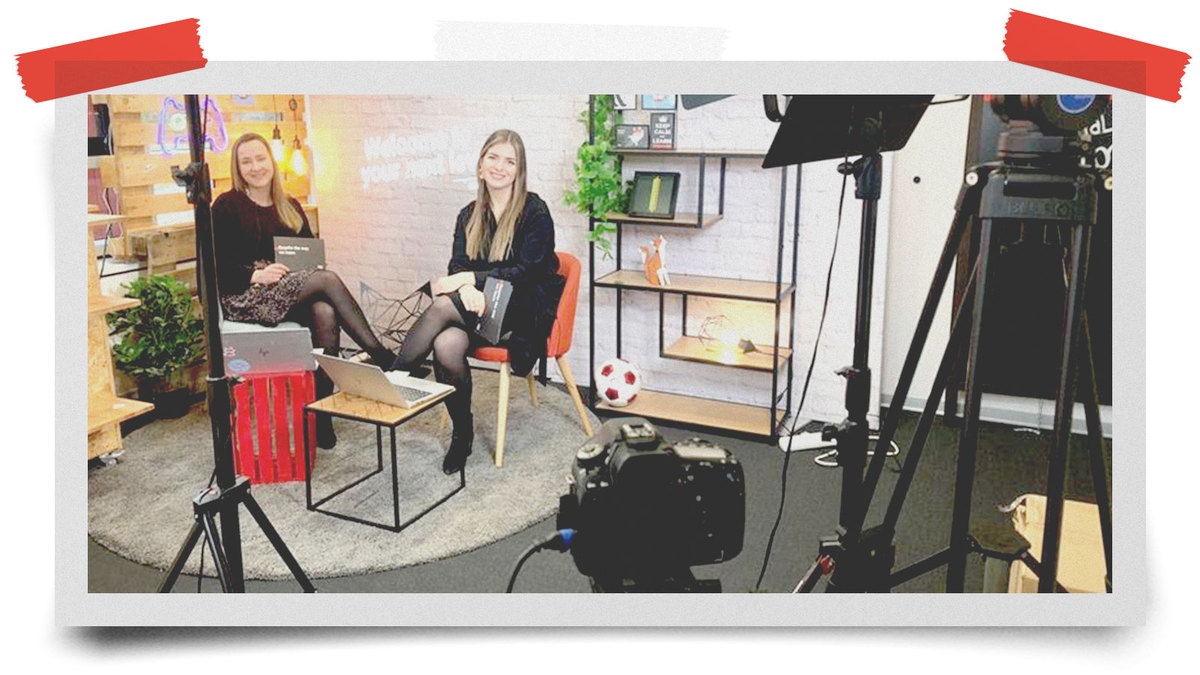
Orientation phase: Check!
We wanted our onboarding journey to continue beyond the first few weeks after welcoming our new imc family members. “Work in progress” is the motto under which we are still developing additional creative ideas to turn this phase into yet another experience.
Mission completed
After six months, it’s “mission completed”. A reason to celebrate. For all of us. And best of all: The journey continues. A range of events and campaigns like our brand ambassador programme or our diversity and inclusion initiative encourage employees to get involved and network, even when working in a hybrid system.
Are we proud of our new onboarding journey? Absolutely! Is it perfect? No. That’s why we are aiming for continuous improvement. Leveraging our employees’ help to shape things is one of the fundamental principles of our new work model. That is why we are inviting our team leaders and colleagues to get involved and help shape these new processes.
We must say though: After two months, the feedback we received makes it clear that it is all worth it – and that is great encouragement for us to step it up a bit more. Let us surprise you!

New work at imc: Shaping the work culture of tomorrow
In the move! interview, we show what New Work looks like at imc and how a shared working environment is designed with the best possible results for everyone.

New initiatives for (Mental) Health and Happiness at imc
Mental health is more important than ever: we show what new approaches we are adopting to promote contentment and health at imc.

Contact person
I' ve been working as a permanent member of the imc Marketing & Communication Team since 2021. The mix of creative content creation, social media and online marketing activities excites me the most about my job.
My goal is to inspire people with creative and innovative content and to make the imc brand more tangible.
My passion besides my job? Travelling a lot and discovering the world. I am always happy to receive feedback or suggestions at [email protected]!
Learning culture nourishes learning ecosystems
Why learning ecosystems need more time and room
When employees are looking for suitable learning resources, they can often choose from a wide range of contents and formats. This can often make finding learning content that meets the specific requirements time-consuming and inefficient.
Technology can solve this issue. A learning ecosystem links several learning platforms and presents the formats and contents clearly in the learning portal.
Many organisations already utilise learning ecosystems, especially larger companies. A learning management system (LMS) often serves as the foundation. This becomes an ecosystem with the integration of additional platforms and tools, such that both internal and external sources feed into search results.
But what good does a solution based on the most advanced technology do, if it is not well received by the learners? User acceptance relies on a corporate or organisational learning culture that is fit for the future.

“In future, personal and professional development will go hand in hand”
It is not the addition of content that makes a learning ecosystem grow, but its expansion through tools and systems. Fundamentally, that means opening up the LMS and integrating external platforms with external content to create a basis for the development of an ecosystem. Yet, that takes courage!
What happens when companies take the leap and hand over control of their learning system? “Responsibility is transferred to the employees,” says Sven R. Becker, Member of the imc Executive Board. “Thus far, the senior management typically dictates corporate learning, which gives it a regulatory character. Yet, experience shows that the company’s success depends on how much learners are involved. A learning culture transformation has to start with the workforce and grow from there. That requires a mindset shift but should be the clear goal.”
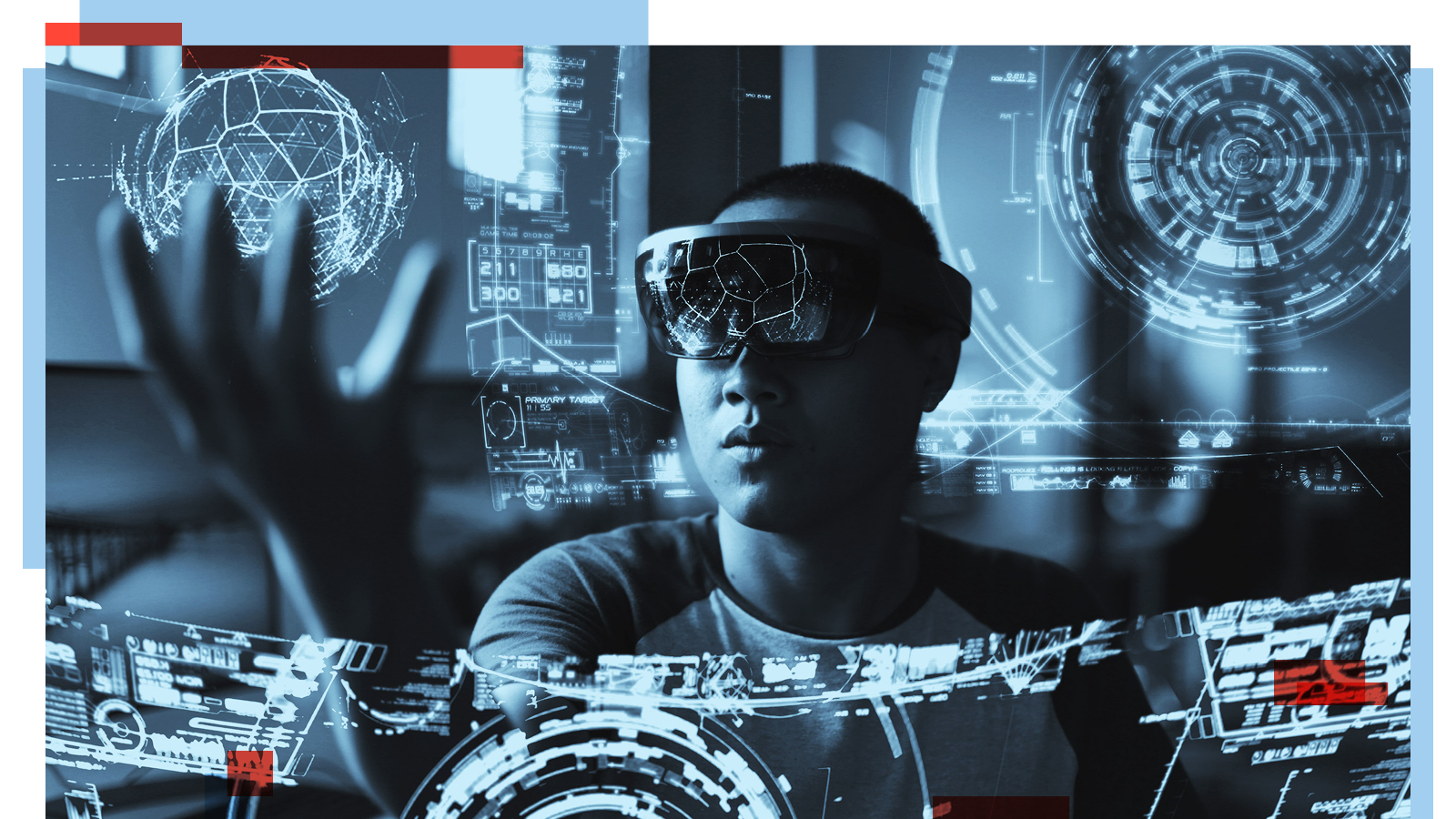
Customised learning paths can be a solution when implementing this, as they help to address personal requirements in a more targeted manner: “In future, personal and professional development will go hand in hand. Different learning systems and achievements must be recorded and stored automatically,” says Andreas Pohl, Director Research and Development at imc. “That facilitates the creation of tailored, custom learner profiles which enable learning across the boundaries of a specific organisation.”
Acceptance and motivation are the first step
“No appointments today – I’m learning.” Is it possible to write that without earning funny looks? Making it possible is a key task for modern companies. Learning and professional development must lose the “necessary evil” or “seminar as a benefit” labels and be anchored as a vital component of corporate culture. One option is to specify professional

Good content can boost the motivation to actually use a learning ecosystem. Sven R. Becker explains: “One trend that is clearly set to stay is gamification. Yet, that alone is no longer enough to win over the new generation of talents. Engaging activities and formats are needed. Getting the mix right is important. A good, blended learning experience is marked by variety – it offers something different. Great stories are remembered and motivate the learner to continue.”
Employees need time and room for creativity to leverage a learning ecosystem
Companies like Microsoft already utilise learning days, learning time, and learning sabbaticals – with great effect. Similarly, the appointment of learning ambassadors has proven successful for several customers of ours. In the automotive sector, some companies have transformation guides who are trusted by their colleagues, putting them in a position to help create awareness for professional development.

Sven R. Becker firmly believes that the strongest ambassador for any measure is the person most critical of it: “If you succeed in changing the view of the strongest opponent, you gain the greatest multiplicator in the company.” Several imc customers have achieved great successes with the learning ambassador model, says Becker.
Learning that is independent of location and time constraints also makes it easier to access the system. That is why it should be equally available from mobile devices and from the workplace.
User generated content – Quick and easy, from creation to publication
An ecosystem keeps growing continuously. Authoring tools are a great option for adding content and knowledge straight from the in-house expertise, as they allow any user to share their know-how.
This turns the learner into a purveyor of knowledge. In that role, they assume responsibility within the system – which will also boost their own motivation.
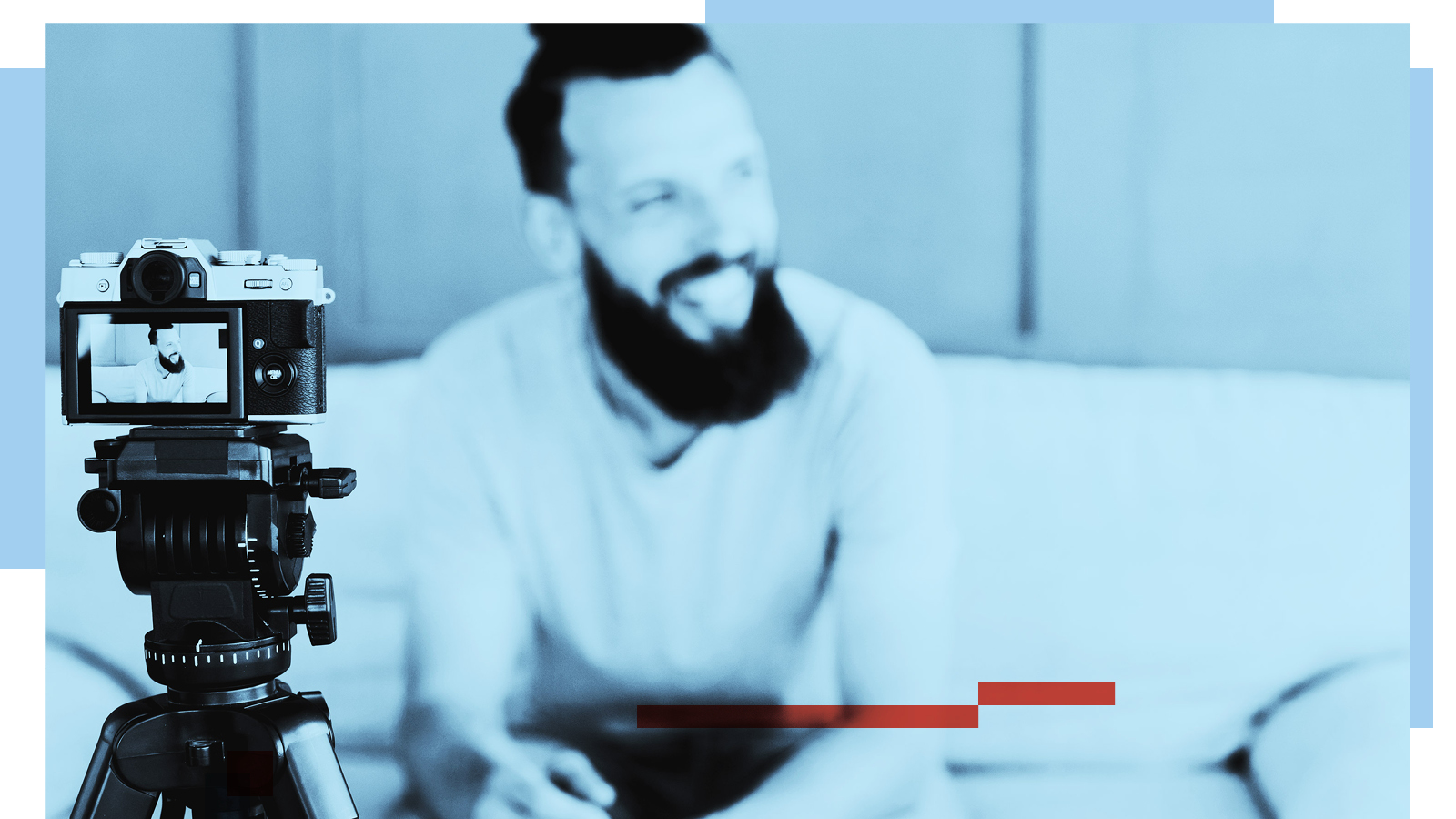
The technology already provides for this. All that is left to do is to get the learners’ buy in. While that may seem like a monumental task, these initial key steps will get your company on the right track:
- Take the leap and expand your learning ecosystem
- Create acceptance for professional development
- Create a great learning experience with motivating content
- Offer time for learning
- Enable employees to help shape the learning experience
- Not trying is the biggest mistake you can make!

Learning Ecosystems: A Universe of Learning
If you want to use a learning ecosystem successfully in corporate learning, the technical requirements must be right. Time to shed light on what systems have to fulfil in order to be able to meaningfully map a genuine learning ecosystem.

Future of Work: Interview with Çiğdem Uzunoğlu
Competence transfer thanks to digital games? It's possible! In an interview with Çiğdem Uzunoğlu, we explain how computer games and continuing education fit together and how they can be used effectively.

Contact person
I joined the imc newsroom team in 2021. As a journalist my heart beats for content and storytelling.
I’m excited to figure out how e-learing and digitization affect the future of work.
My task is to create content to talk about and I’m always looking for trends.
Privately I love to travel and eat Tapas.
Topics: E-Learning Trends, Corporate Social Responsibility, Press and Influencer Relations, New Work
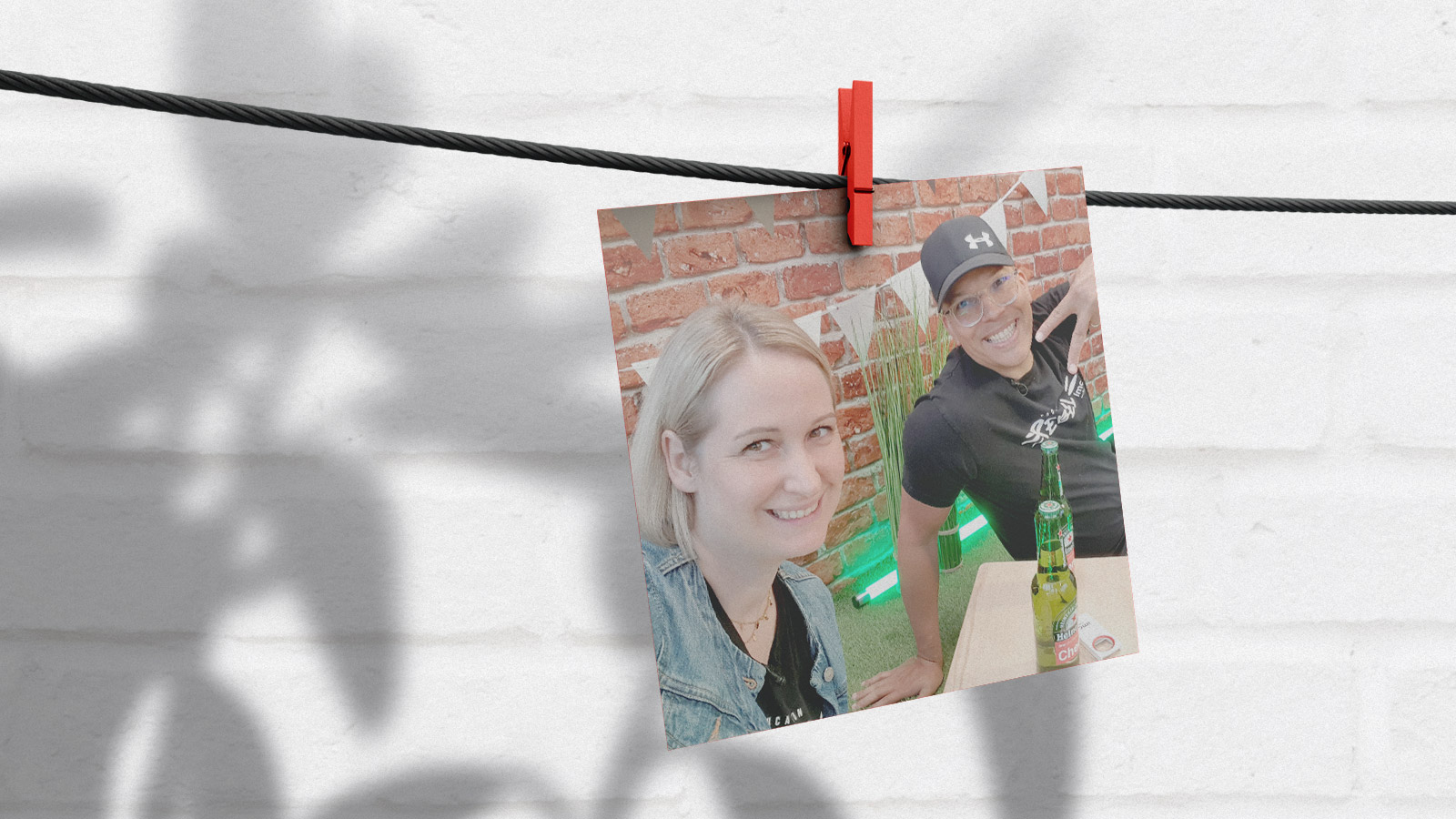
New work at imc: Shaping the work culture of tomorrow
What the development of a shared working world with the best possible outcomes for employees, customers and the organisation looks like
New work is in. Everyone’s talking about it. There are discussions about flexible working hours, new office concepts or even the 4-day week. All these models focus on one thing: companies want to put employees in the focus and create a working environment in which creativity, self-determination and flexibility are lived.
This change is also actively driven forward at imc. We therefore spoke with a New Work pioneer, who is helping to manage the process. In the move! interview, Kerstin Steffen reveals what is meant by performance culture instead of attendance culture, why imc decided against a total change to home office work and what role managers play in all this.

Kerstin Steffen
Director Brand Strategy and New Work Pioneer

Hello Kerstin! Thank you for making time. imc has recognised that a new work culture is needed and started the New Work Initiative. When did you start the “transformation phase” and why did you take this step?
Kerstin Steffen: We were tied to our home offices for almost two years because of the corona situation. That already gave us many opportunities for development. Before we embarked on the actual transformation, we were facing the question: “Is it actually reasonable to take a step back, or should we continue pressing ahead?” We made the decision to move to a “100% flexible but not 100% remote” model. The transformation phase serves to smooth the transition to the new official, hybrid work model we will adopt in 2022. We want to offer the teams the opportunity to try out and test things, and to incorporate their experiences into the new work culture.

100% flexible but not 100% remote – What exactly does that mean?
Kerstin Steffen: Simply put, it means that our activities are no longer tied to the office as a matter of principle, but the company affords us the flexibility to decide whether we want to work from home or from the office. You could also describe it as performance over attendance culture. We have no fixed attendance quota, but time in the office should be agreed with the team and the manager, and flexibility must not compromise organisational objectives.
While we firmly believe in flexibility, we clearly decided against moving all work to the home office. The relationship and commitment to the company remains very important to us. We want our offices to remain a place of communication and interaction – and that applies to official team meetings as much as personal discussions over a coffee.
You established a New Work Pioneers team. Which departments do the team members come from? How do you collaborate?
Kerstin Steffen: The core team of the New Work Pioneers is based at the headquarters in Saarbrücken where the decision to embark on the New Work Initiative was made. We selected the team based on competences and included members from Internal IT, HR as well as Communications. That allows us to bring together the core competences to support process changes within the pillars of people, technology and spaces. Of course, we can add members that contribute other skills as and when we need them.
We hold regular meetings at least once a week, where we discuss and prioritise all the topics in our target plan, as well as any issues that arise. At times, the core team is split into smaller project teams. For instance, we maintain regular feedback loops with the managers of our different offices to get everyone involved. It also helps us see where improvements are needed and highlight how we might provide support from the headquarters.
Can you summarise the objectives of the imc New Work Initiative in one sentence?
Kerstin Steffen: The overarching goal is to develop a working world together that generates the best possible outcomes for us as employees, our organisation as well as our customers in the given context and situation. In other words: We love being flexible, but this is tied to the condition that the corporate objectives are met and performance is maintained.

Would you say this mindset is what makes new work at imc so special? What is the difference between your approach and the total switch to home office work other companies have realised?
Kerstin Steffen: We are a digital brand and stand for learning. Naturally, we want to understand modern formats and establish ourselves as a pioneer. Yet, compared to the key players in the market, we still have some catching up to do. Nevertheless, I would like to emphasise that this was a fantastic step for imc, and that our colleagues and applicants already consider it an absolute benefit. Working together to drive and shape cultural change is also a huge opportunity – and I invite everyone to seize it. We can be fairly sure that this is not a universal prospect offered by all companies, which makes it a USP for us.
Personally, I really want to see every single person benefitting from it. That means we also need to be open to constructive criticism and listen to concerns, no matter how excited we are about our ideas and progress.
We are all learning together throughout this change process, and our success is dependent on wide-spread acceptance.
What role does remote or virtual (team) leadership play in this transformation?
Kerstin Steffen: It is very much a matter of mindset. We know that team leaders and managers play a key role, because they represent the corporate values and culture to a great extent and infuse the company with these. We adapted the leadership model and developed three new pillars or principles: Lead, Coach and Care. Our managers receive targeted training to develop and enable them to realise these principles and respond to the new circumstances. Based on my experience, I would say traditional management elements should be combined with agile methods. While I’m a huge fan of digitisation, I believe that digital tools are no substitute for personal contact. We consider hybrid formats a great opportunity, but gradual development is key. We are already holding intensive talks and testing various formats.
Managers also need to learn to place more trust in their employees and to be more organised themselves. Flexibility also involves walking away from rigid principles and allowing new things. It is important that managers adjust their mindset to support this.
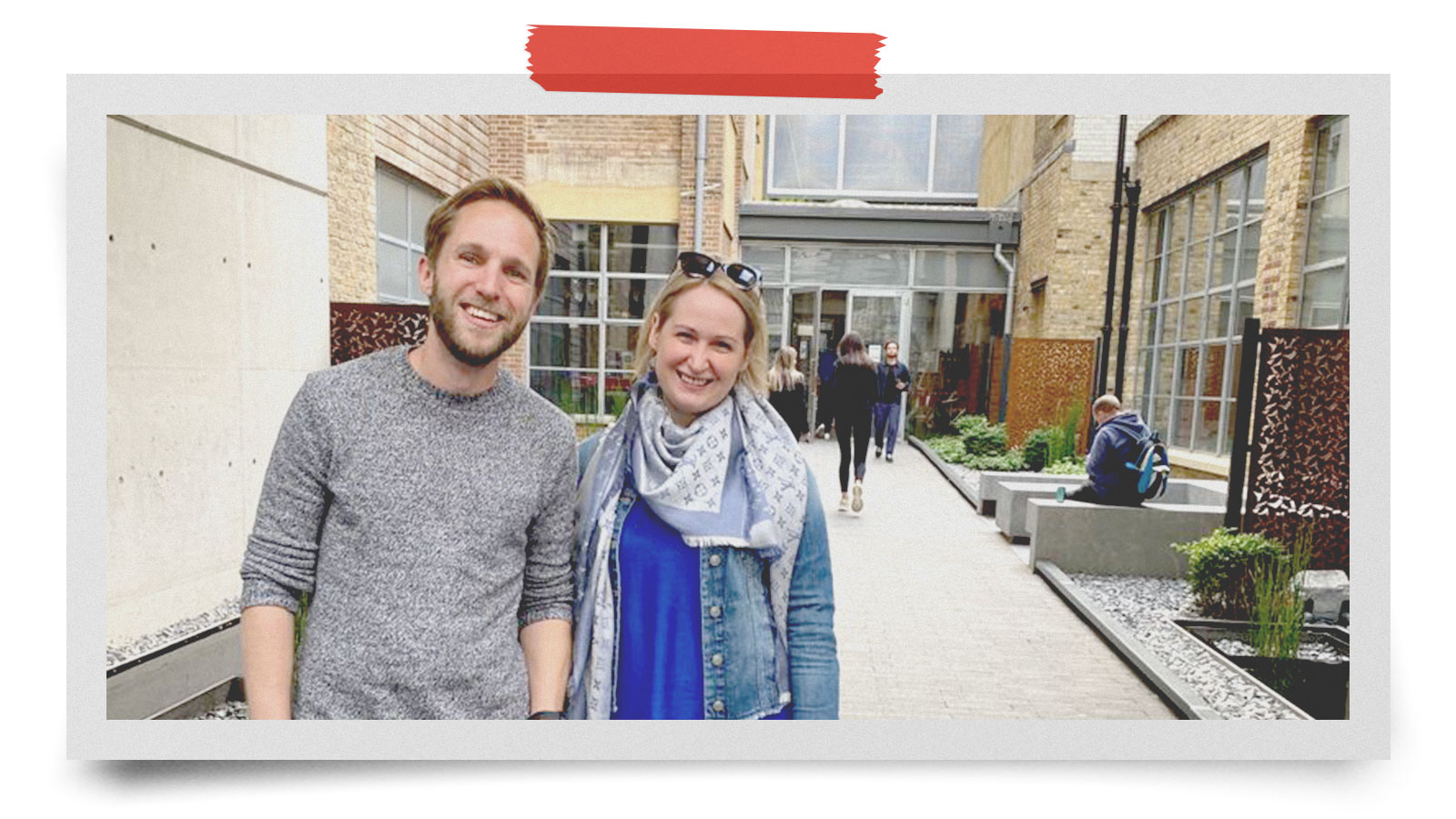
What were the biggest challenges? How did you respond to them?
Kerstin Steffen: We are facing challenges every day, and I’m sure that will still be the case after the transformation. We are really looking at an agile learning process – for our leadership as well as things like our hardware, office equipment or seating arrangements. Being spread out across different locations on different continents doesn’t exactly make it easier, but we are welcoming that challenge. We might not be 100% perfect, but we genuinely try to create a new work culture step by step. We are all highly motivated and rather proud to see our first successes taking shape.
Internal Communications and HR contribute a lot of the support for the measures. It is important to us that the changes are transparent and successes are visible.
How was the transformation phase communicated to the employees? How can you avoid unsettling employees?
Kerstin Steffen: Communication in itself is always important! Once the decision had been made, we first informed the team leaders and asked them to talk to their teams and relay any unanswered questions to us. We then made a global announcement through the official executive channel in the form of a virtual event and sent out an info email with a recording of the official announcement. In addition, we created points of contact in the intranet where information can be obtained, and key questions are answered. New formats were introduced to provide information as well as encourage employees to participate in the dialogue. Of course, the Transformation Team is always available to answer any questions.
Beyond our efforts to inform, each team is invited to help shape the transformation and to identify what is important for the team. We created a global framework. It is now up to each team where they go with that and how they develop it.

What is the employees’ response to the initial changes? Have you received positive or negative feedback yet?
Kerstin Steffen: The feedback we received was mostly positive, which motivates us to drive the transformation. Naturally, concerns and worries were voiced, but that is to be expected in any change process. It is important to take that seriously and actively offer support. It is easy to get carried away, and we must remind ourselves that it is not only a major change in the organisation, but also a cultural shift. That demands sensitive and responsible support.
You still want to trial and test various things. What can we look forward to at imc? What else have you planned?
Kerstin Steffen: First of all, we improved our internal communication channels and created new channels to strengthen team spirit. For instance, we started a newsletter that plays a key role in actively providing information and highlight success stories. We want to make small steps visible, initial successes tangible and let employees share in the experience.
The new formats we created aim to enhance collaboration and communication. The offer will gradually grow: We will create global guidelines, hold workshops and include smaller learning nuggets.
We will also incorporate formats such as social learning, informal learning and user generated content. Our brand ambassadors are also actively helping to shape the transformation. Measures like our BarCamp, Espresso Webinars and Flow & Focus sessions are already well-established and successful. Of course, we will develop these further and make them more professional. As to the strategic aspects, the adaptation of our leadership programme will be crucial, and we are professionalising our operational model.
Thank you for your time, Kerstin! We are excited to see what you have in store for us.

Contact person
I' ve been working as a permanent member of the imc Marketing & Communication Team since 2021. The mix of creative content creation, social media and online marketing activities excites me the most about my job.
My goal is to inspire people with creative and innovative content and to make the imc brand more tangible.
My passion besides my job? Travelling a lot and discovering the world. I am always happy to receive feedback or suggestions at [email protected]!
Shaping New Work together at imc
Take a look behind the scenes with move!
Flexible working models, flat organisational structures and new office concepts - this is already what the new working life looks like in many companies in times of New Work. We at imc have also recognised that it is worth trying out new ways of working. We want to use the opportunities of the modern working world and create something new.
In our background report "move!" we therefore take you exclusively behind the scenes at imc. Our goal is to establish a new working culture that focuses on the self-determination and flexibility of our employees. Join us on our journey towards a new working culture and experience the opportunities, challenges and successes from the classic working world to the "new working" of the future.
In exciting background articles, event reports and photo galleries, we show what modern working at imc means from now on.
What does New Work really mean?
The modern work of tomorrow means first of all initiating and fostering change.
We are in a transformation of the working world in which new professions are emerging, rigid hierarchical management styles are being dissolved and a human-centred way of working is being emphasised.
New Work describes this transformation of the working world, which focuses on self-determination and agility.
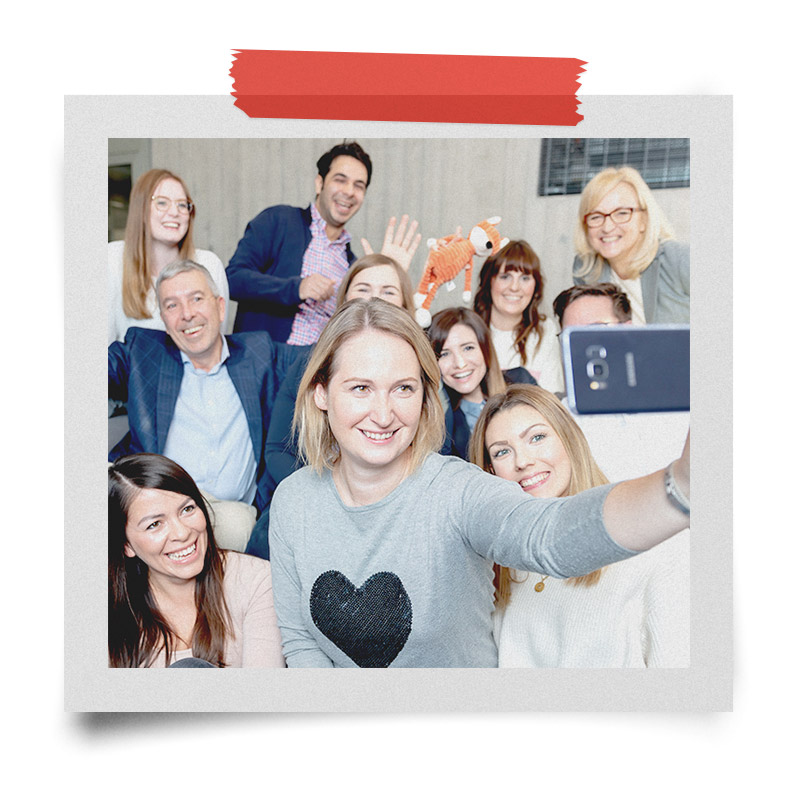

Milestones of the New Work Transformation at imc
One year of New Work is behind us, so it's time to take stock. Together, we look back on the highlights and milestones of the past year.
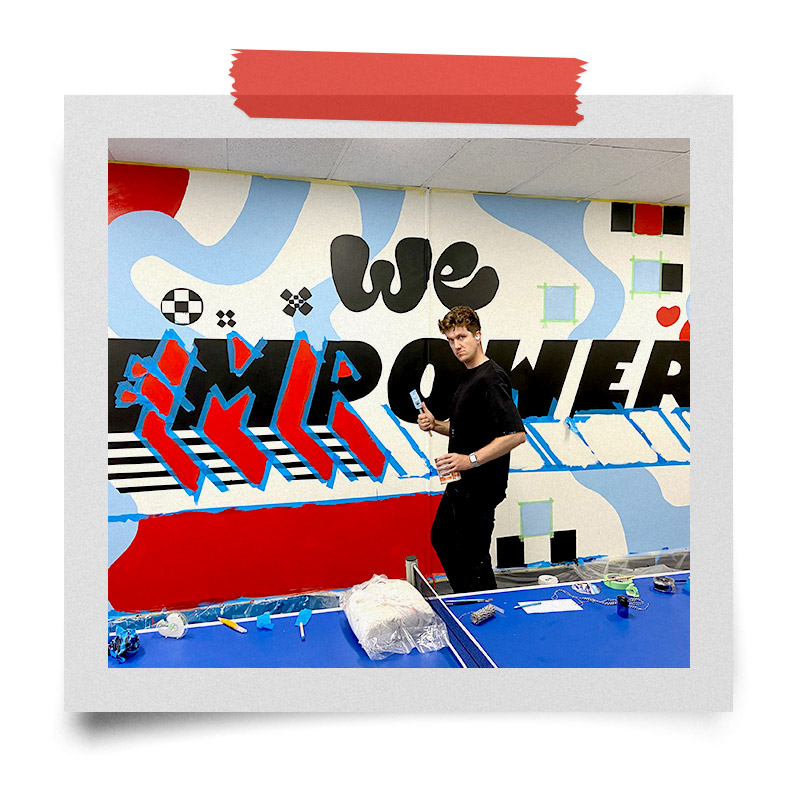
New Work – New Office?
New work needs new offices: That's why we have completely rethought our workspaces and redesigned them in just a few simple steps.

Why personal encounters and intercultural exchange are crucial for new work
We take you on a journey on the occasion of our 25th anniversary and show you why positive emotions, personal encounters and intercultural exchange are crucial for New Work.
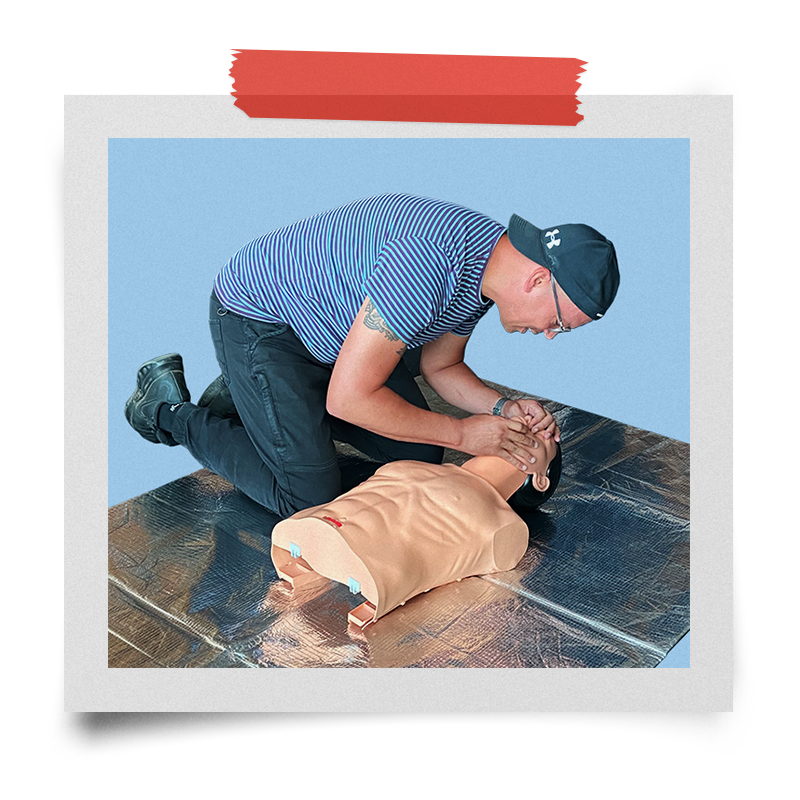
Preventive Wellbeing for a Healthy Workplace
Time to talk about health! Here at imc, August was all about preventive wellbeing and mindfulness. We share some highlights with you.
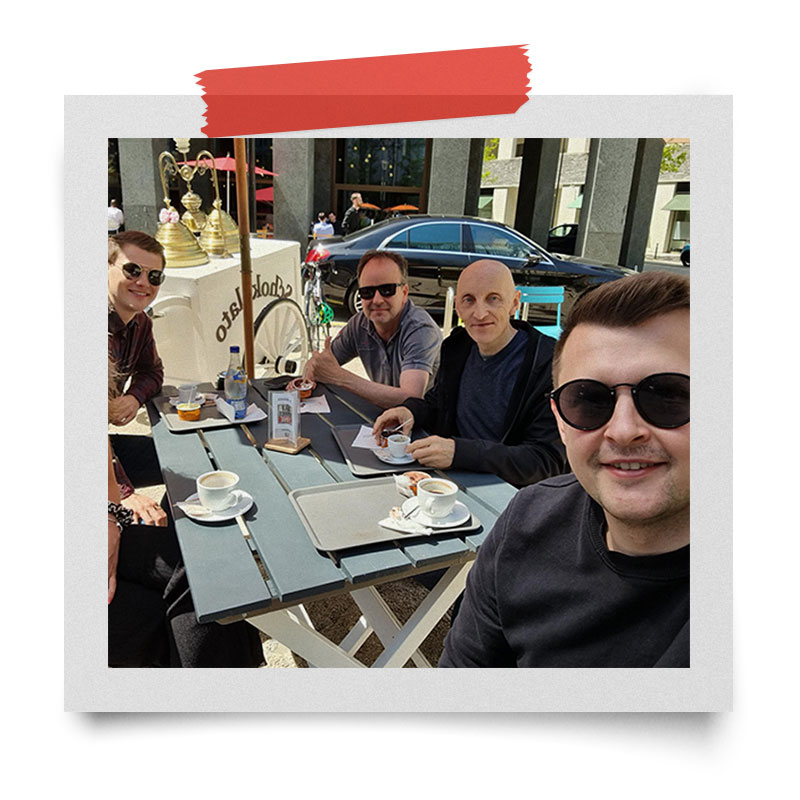
In-House Events and Corporate Learning: A Winning Combination?
Corporate learning and events don’t go together? Wrong! We have summarised the most inspiring formats with added value for the learning culture.
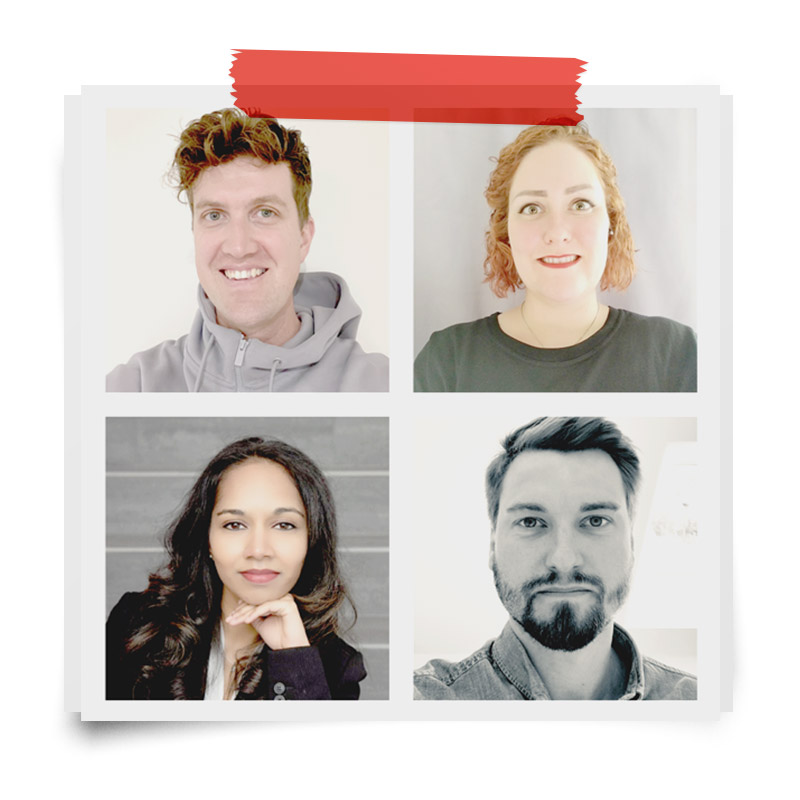
Choosing Where We Work: More Space for Creativity with New Work
We are asking: After eight months of hybrid working, we wanted to know how New Work has changed the everyday working lives of our employees.

Welcome on board - the new imc onboarding journey
No more boring onboarding processes! In the move! article we show how we at imc will also create a new welcome culture in the future with New Work.

New initiatives for (Mental) Health and Happiness at imc
Mental health is more important than ever: we show what new approaches we are adopting to promote contentment and health at imc.
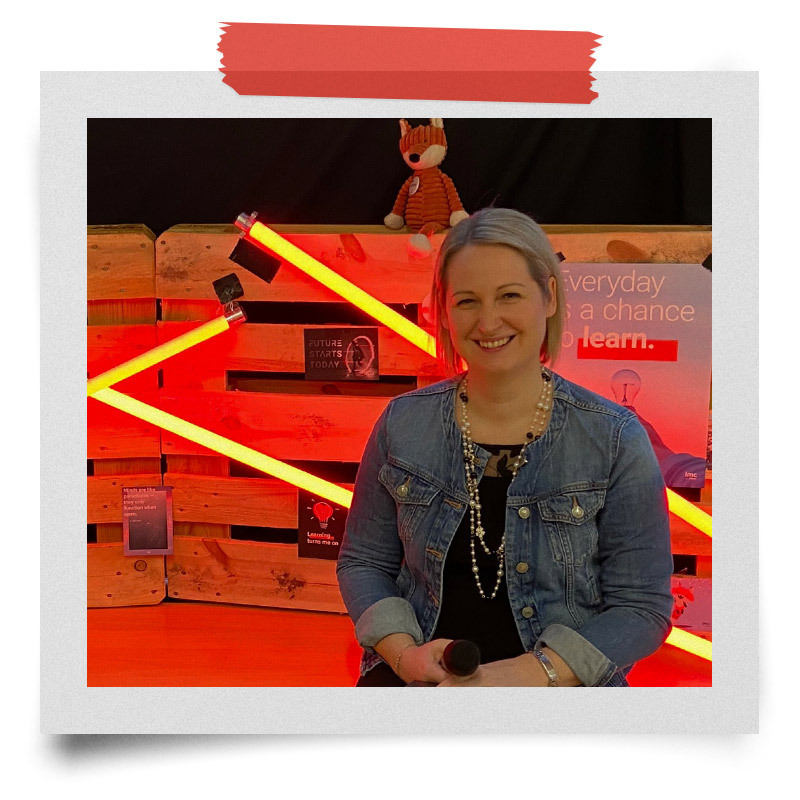
New Work at imc: Shaping tomorrow's working culture together
In the move! interview, Kerstin Steffen reveals what New Work at imc looks like from now on and how a shared working environment is created with the best possible results for everyone.
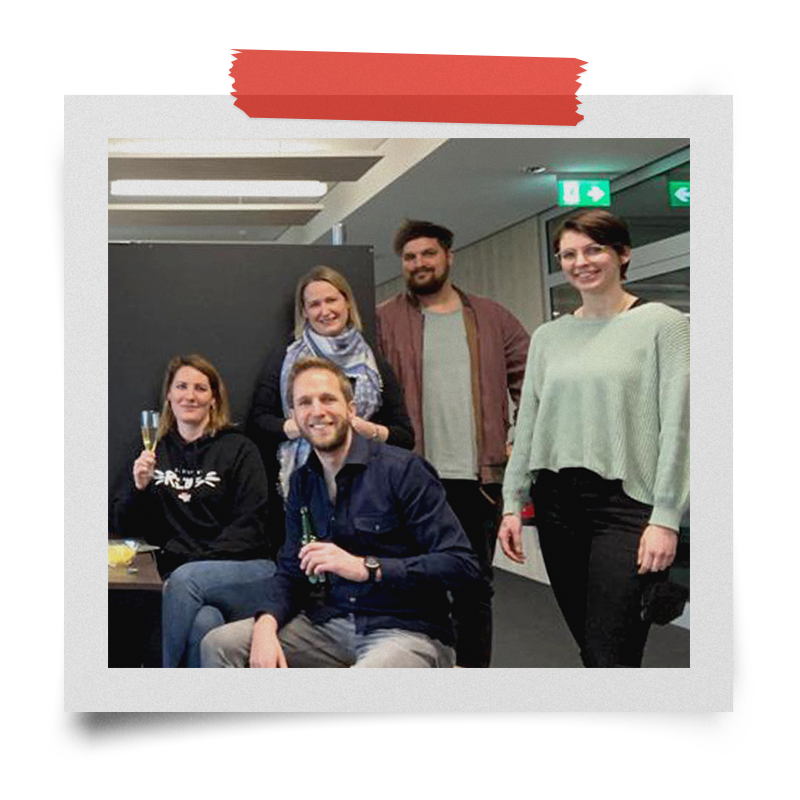
It’s all about Communication & Collaboration
Hybrid working and global teams have fundamentally changed the way we work together at imc. So it's high time for us to ensure global communication and collaboration standards so that collaboration continues to work successfully.


Contact person
I've been working as a permanent member of the imc Marketing & Communication Team since 2021. The mix of creative content creation, social media and online marketing activities is what excites me most about my job.
My goal is to inspire people with creative and innovative content and to make the imc brand more tangible.
My passion besides my job? Travelling a lot and discovering the most beautiful places in the world. I am always happy to receive feedback or suggestions at [email protected]!
Like. Follow. Share.
Discuss the topic of New Work with us and show us how modern working looks like in your company.
Choose your channel and let's go: like, post, discuss, share and recommend.
Can Germany afford to be this sceptical about AI?
“In Germany, the discussion of artificial intelligence (AI) is marked by skepticism. That bothers me.”
In his blog Futurework.online, Kristian Schalter, Director Strategy and Digital Transformation at the Confederation of German Employers' Associations (BDA) draws on his background in political science and economics to discuss how future technologies such as AI (artificial intelligence) are changing our working world. In this interview, he reveals why Germany cannot afford to remain this skeptical about AI in the long term.


Hello Mr Schalter, I really appreciate you making time for this interview. In your blog, you are advocating a less skeptical approach to artificial intelligence. Why do think the German mistrust of AI is unjustified?
Kristian Schalter: Artificial intelligence has enormous potential for making our lives better and our work easier. Yet, the discussion in Germany largely revolves around risks. That bothers me. I am not against some healthy skepticism in principle. However, many things are exaggerated – especially when it comes to the future of work. There is a lot of talk about the end of human work, broad automation and large-scale redundancies. This has almost become a tradition with the technological progress in Germany. The way I see it, the biggest risk is that we are falling behind with AI development on an international level, and that the jobs of the future are created elsewhere – not in Germany or even Europe. That would truly be a horrific scenario.
Where would you say that mistrust among the people stems from?
Kristian Schalter: When people read reports about algorithms with a discriminating bias or absolute surveillance in China, mistrust is a natural reaction. We tend to remember negative things better than positive ones. The term “artificial intelligence” certainly doesn’t help, either. Saying “machine learning” would be better. Although that is just one sub-form of AI, it describes what really happens. AI is not positive or negative in itself. It is a means to an end. What that end is, is still up to humans to decide. This makes it even more important to maintain a clear focus on the potential of AI and discuss the opportunities properly. We need to figure out where we really want to go with the development. If we look at fields like healthcare or mobility, it becomes obvious how great the potential is, and how much we can all benefit from it personally. There is no doubt about the things we don’t want. That is why we must be among the world leaders here. Setting international standards – and that includes ethical standards – is only possible from a leadership position.
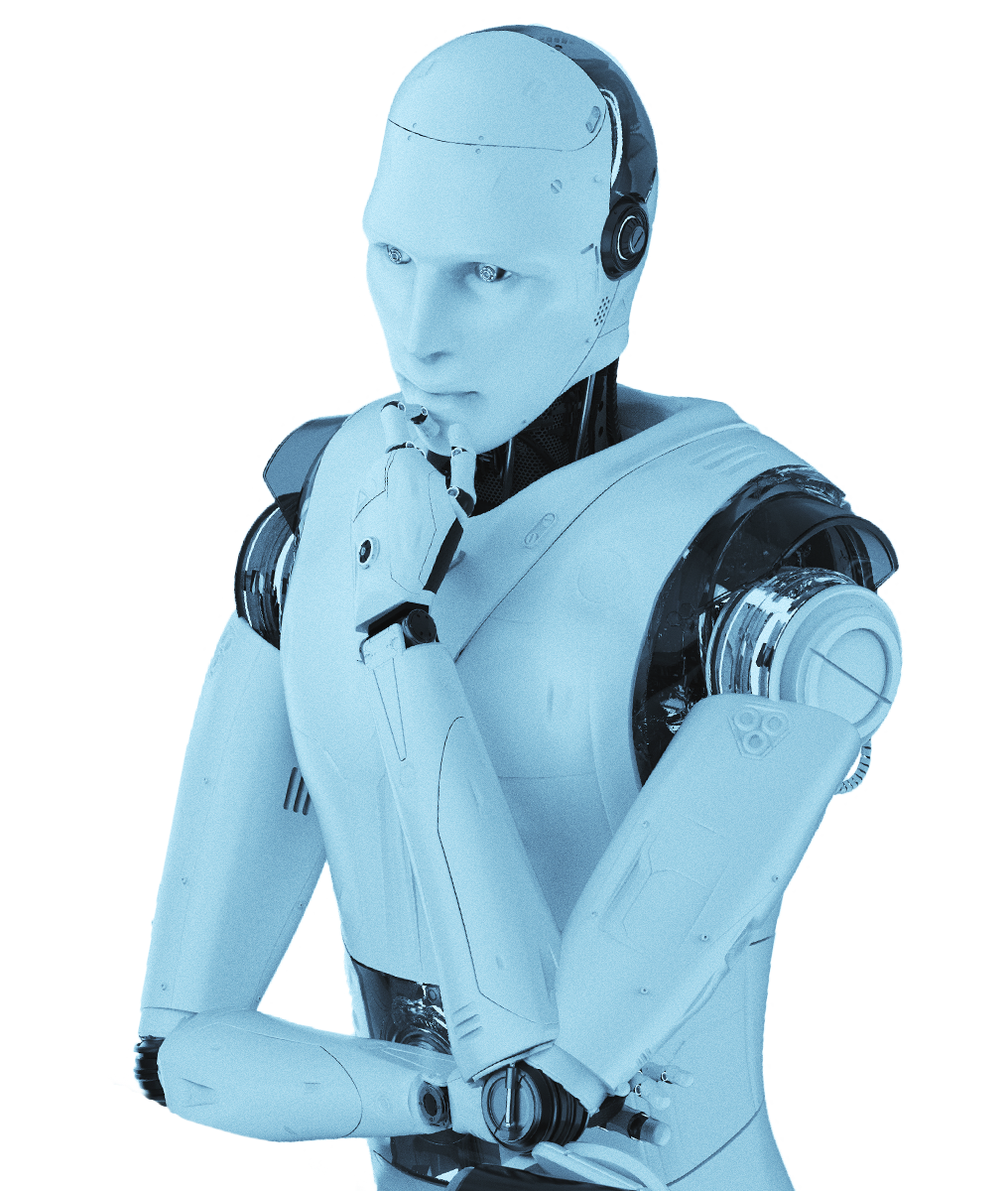
What tips would you give those who want to know more about AI and experience the latest AI technologies?
Kristian Schalter: For the second part, simply using your smartphone will give you great insights. It contains many AI applications we use every day: in the navigation function, email inbox, web browser, newsfeed, language assistant, movie recommendations and so on. Professionally, I focus on the future of work. Artificial intelligence is already supporting people at work in a myriad of ways. I am particularly impressed with the industrial projects of the Fraunhofer Institute. They are always in tune with the latest trends, and reflect the reality companies experience particularly well.
Could you give an example of how AI would change a specific job?
Kristian Schalter: The most prominent example that is often used would be a radiologist. In many cases, artificial intelligence can analyse X-rays and patient data both faster and with more precision than a human. Rather than making the radiologist redundant, this means they can focus on other aspects of their work – like patient consultations. Pattern recognition is also useful in other fields. One example would be production: Identifying recurrent patterns is a huge issue in quality control.

"In many cases, artificial intelligence can analyse X-rays and patient data both faster and with more precision than a human."
We all need to acquire new skills. How does the change in job profiles affect that?
Kristian Schalter: Education is the key issue in the digital transformation of the working world. The idea that completing an apprenticeship or graduating with a degree means having acquired the necessary competences for a certain career all the way to retirement is unrealistic. Flexibility and adaptability are the most crucial skills in the modern working world, as job requirements constantly change. While I believe the term “lifelong learning” is overused quite a bit, it perfectly describes what needs to happen: Employees must be willing to gain new knowledge – in every stage of their career. Many still resist that.
Let’s look at it the other way around: Can AI help employees to gain new skills? If yes, how?
Kristian Schalter: Yes, absolutely. After all, the very advantage of intelligent algorithms is that they can give me tailored recommendations based on my personal qualifications. Among other things, this can help with the creation of customised professional development offers. Secondly, AI also provides support on the job. For example, smart glasses that project digital images in the wearer’s field of vision to create an augmented reality aid in the performance of various tasks. There are many opportunities.
How would you imagine an optimal collaboration between a human lecturer and AI – a “robot teacher” so to speak – to convey learning content?
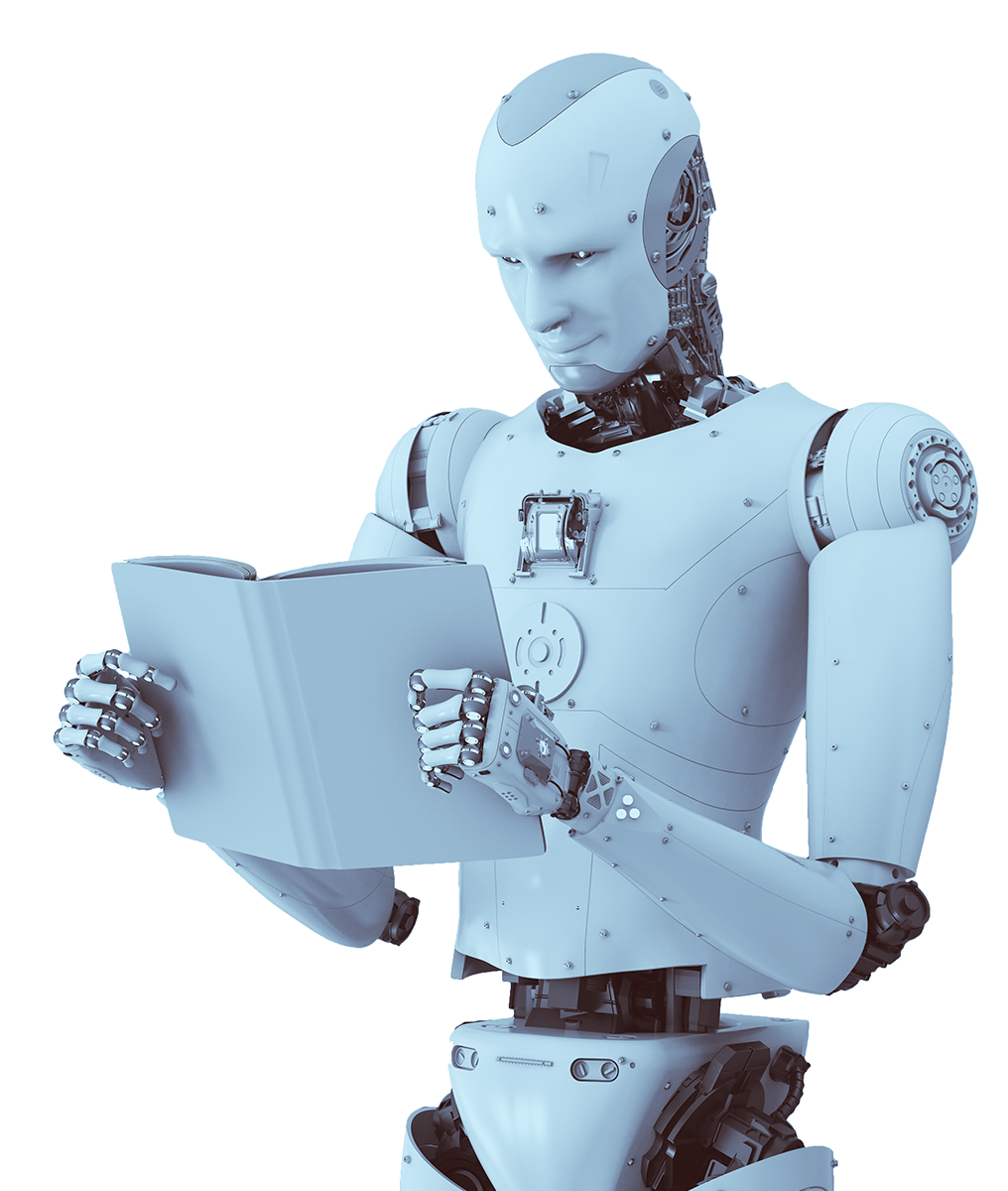
Kristian Schalter: Humans have unique skills that no robot in the world can replace. A great teacher has more than technical knowledge. They stand out with their empathy and social competences. I trust we all had that one teacher who was a genius in their field, but never quite cut it in their interactions with the younger generation. Equally, we all had a teacher who was able to create enthusiasm for their subject, and maybe even made a real impact on our development. Praise from a computer will never have the same effect as praise from a human being. Meanwhile, computers are better at processing data, and this can be leveraged for determining a student’s optimal learning speed and the topics they need to catch up on, and for recommending tailored learning content. This opens up great potentials – also in terms of reducing the teachers’ workload. However, we still need to learn how to use those methods effectively as part of the lessons. I would say we are only just getting started with that.
Most people are relieved to hear that AI cannot replace them entirely. Which competences do you think make humans unique and therefore irreplaceable?
Kristian Schalter: We should avoid trying to beat the machines. That will not work. We need to see them as a support system. We will gain more from focusing on our strengths: creativity and emotional competences – the things that set us apart from machines.
A perfect closing remark, Mr Schalter! Thank you very much for this interesting interview.
Visit Futurework.online – it’s worth it!
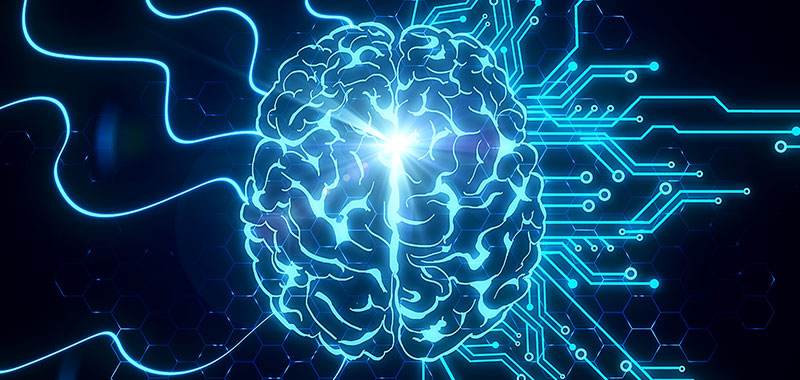
AI in corporate learning
There are many concerns about artificial intelligence (AI). But especially in corporate learning, AI can be a great help. We take up some questions around the topic of AI and go into them in more detail.
![[E-Learning Punk] Virtual Classroom Preview](https://images.im-c.com/wp-content/uploads/2020/06/imc_image_elearningpunk_virtualclassroom_thumbnail_2020_06_05.jpg)
AI Learning: "Jingle Bots, Jingle Bots..."
Many large organisations are already taking advantage of the positive effect of games on learners when it comes to the professional development of their employees. We have taken a closer look at the most common types of games for you.

Contact person
I joined the imc newsroom team in 2021. As a journalist my heart beats for content and storytelling.
I’m excited to figure out how e-learing and digitization affect the future of work.
My task is to create content to talk about and I’m always looking for trends.
Privately I love to travel and eat Tapas.
Topics: E-Learning Trends, Corporate Social Responsibility, Press and Influencer Relations, New Work
Computer Games in Professional Development
“Games have helped to shape the development of AI applications”
Çiğdem Uzunoğlu has been Managing Director of the Foundation for Digital Games Culture since February 2018. In this interview, we asked the games expert, how computer games and professional development go together, and which competences can best be conveyed with digital games. We also wanted to know, which changes game fans can expect thanks to the enormous technological advancement relating to AI.


Hello Ms Uzunoğlu, thank you for making time for this interview on (serious) games. We are particularly excited to hear your answer to our first question. Do you have a favourite computer game?
Çiğdem Uzunoğlu: No, I have no absolute favourite game. One of the games I really enjoy playing right now is Supertype. It is both simple and fascinating. Players can train their physics skills and abstraction capability by solving small riddles.
That sounds entertaining but also demanding. The foundation you’re managing aims to highlight economic, cultural and social potentials of digital games as sophisticated as this one. A rather extensive and ambitious goal? What specifically is behind that mission?
Çiğdem Uzunoğlu: What is behind games? Groundbreaking content, design approaches and technologies for the digital age. Yet, these games components are barely developed for applications outside of the games industry. Our foundation wants to change that. We believe in a society that leverages games to shape digitisation, employs gamification to find new approaches to problem solving, and understands digital games as enrichment of its cultural identity. On that note, we consider ourselves a bridge between the games industry, society and other parts of the economy. We highlight opportunities for collaboration, and create new connections between players from different fields. That is why we also describe our work as a cross-over approach.
What would you say makes a computer game valuable?
Çiğdem Uzunoğlu: Games are cultural goods. In principle, every game has a certain underlying value. It is always a cultural product created by certain persons under certain circumstances. Commercial productions are primarily concerned with the games being fun, fascinating and engaging – the same criteria that mark successful books or movies. Of course, there are games that create awareness of relevant issues, or aim to convey specific content. That also applies to serious games. Yet, even an abstract game without a clear message can have artistic value.
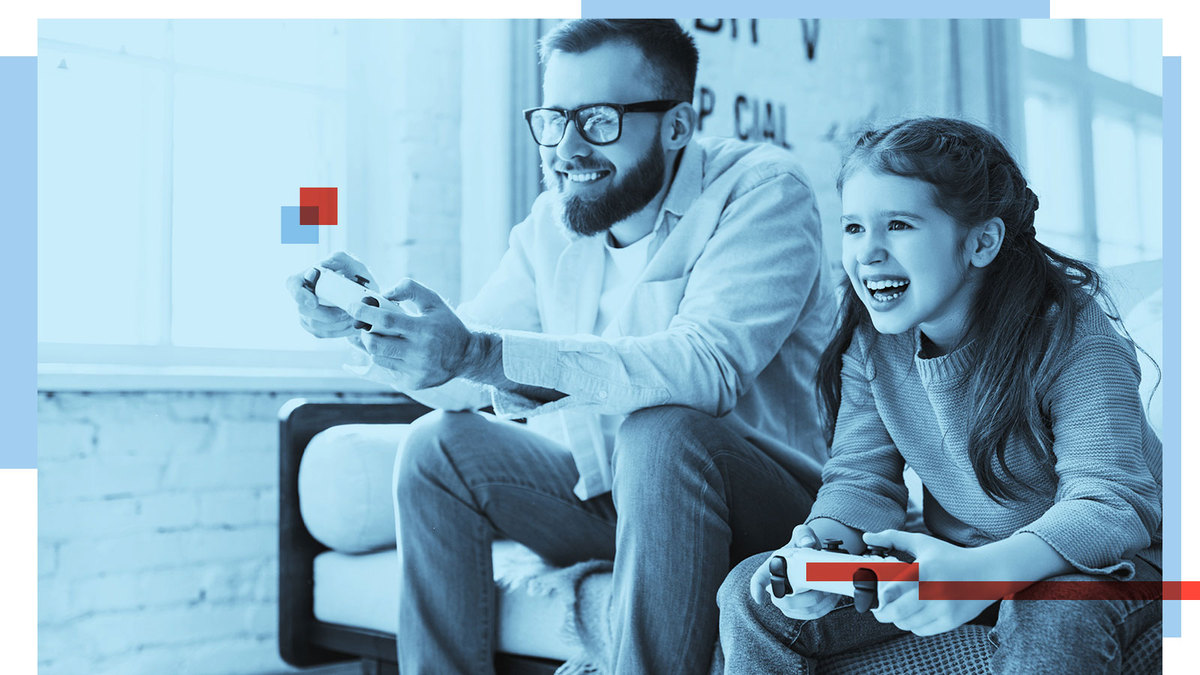
"Commercial productions are primarily concerned with the games being fun, fascinating and engaging – the same criteria that mark successful books or movies. "
Do you think certain competences are best learned in a game rather than by other means?
Çiğdem Uzunoğlu: In general, games teach us to deal with frustration and failure. In the long term, you can only be successful if you are able to learn from your mistakes. Most games are based on some sort of system. This makes them particular suitable for getting across relationships. You learn to grasp the consequences of your actions. You understand how individual changes affect a bigger process. According to a recent study by PwC, HR managers who already use serious games utilise these primarily for training soft and hard skills, as well as their employees’ cognitive skills. Digital games are also used more intensively in training and professional development. The interactive aspect helps to convey complex learning material and solidify knowledge.
Where do you see possibilities and opportunities for companies for imparting competences with a game-based approach?
Çiğdem Uzunoğlu: For many people, games open the door to the digital world. So, when it comes to digital topics, gamification and serious games allow you to pick up from where their daily life begins. According to PwC, more than half of the HR managers using serious games see a clear benefit from these games. The same applies to colleagues and superiors who hold that the fun factor helps to understand and manage work processes. Everyone can progress at their own pace, which also removes any fear of real consequences. At the same time, results are easy to analyse and compare. That is why HR professionals see the greatest potential for serious games in the training process.
Can computer games challenge themselves? How can computer games sensitise for moderating the use of digital games?
Çiğdem Uzunoğlu: Games that question their own content have been around for a while. For instance, the German game “Spec Ops: The Line” deconstructs the image of the heroic soldier and the just war. Meanwhile, at the end of Metal Gear Solid 2, the protagonist faces the fact that their reality is only a simulation and that they should switch off their console. Apart from such content-related conflicts, there are also certain mechanisms that indicate that a game might have been played for too long: game characters getting tired or text overlays.
Let’s move on to the scientific topic of the year: artificial intelligence. AI has a major impact on digital formats and solutions. How do you see technology changing the gaming sector? What is your assessment of that technology in principle?
Çiğdem Uzunoğlu: Artificial intelligence has always played a crucial role in games. After all, we are competing against the computer unless we have a human opponent. Thus, the games industry has helped to shape the development of AI. Especially when extensive animated game worlds are produced, complex AI systems are working in the background which react to our interactions. Some games also allow us to build relationships with characters that are controlled by the computer. These relationships will change depending on our actions in the game. AI systems in the background make this possible.

Which AI-based serious games do you know? Where are these successfully utilised?
Çiğdem Uzunoğlu: For most games, AI is a key component of a bigger creation, just like graphic and audio design. Naturally, the same holds true for serious games. Digital games respond to our actions or inputs based on algorithms. These are AI systems, albeit weak ones. The main drivers for innovation are found in the large entertainment games segment. A while ago, “Middle-earth: Shadow of Mordor” based on The Lord of the Rings caused a great sensation. In this game, AI opponents learn from every battle and adjust to the players’ behaviour. You could say they “remember” past encounters.
What future trends do you see for AI-based computer games?
Çiğdem Uzunoğlu: Especially in the major international games productions, the trend goes towards the creation of even more realistic worlds inhabited by almost lifelike characters. Of course, if you want a character to appear more real and behave more intuitively to the player’s behaviour, you need more sophisticated AI systems. So ultimately, it is about leveraging AI to create virtual characters exhibiting plausible reactions to ourselves.

"So ultimately, it is about leveraging AI to create virtual characters exhibiting plausible reactions to ourselves."
Do you think there are limits to the use of AI in computer games? What would those limits be?
Çiğdem Uzunoğlu: Generally speaking, limits are dictated by the current state of the art and the budget. That is why continuous funding for games on a national level is crucial for the German games industry, especially with regard to the last aspect mentioned. German developer studios can only keep up with the international competition if they have sufficient financial means. That applies to AI specifically, but also to games production in general.
We are curious about your foundation’s upcoming projects. Which one are you most excited about?
Çiğdem Uzunoğlu: First of all, we initiated a new event series on cultural aspects of games this year as the next instalment of “Quartett der Spielekultur,” which is supported by the Federal Commissioner for Culture and the Media. We also launched GamesTalente, a nationwide sponsorship programme for teenagers, together with Bildung & Begabung (“education and talent”), the national centre for the advancement of young talent. In line with our objective to build bridges, we will guide representatives of various foundations and a group of educators through this year’s Gamescom trade fair, and introduce them to the particularities of the industry. Several other projects – some with national reach – with renowned partners like the Konrad Adenauer Foundation and the Foundation “Remembrance, Responsibility and Future” (EVZ Foundation) are in the application stage. Naturally, I am greatly anticipating feedback and responses to these.
Thank you very much for the exciting interview, Ms Uzunoğlu! We will keep a keen eye on your planned projects, and wish you every success with all your ambitions!
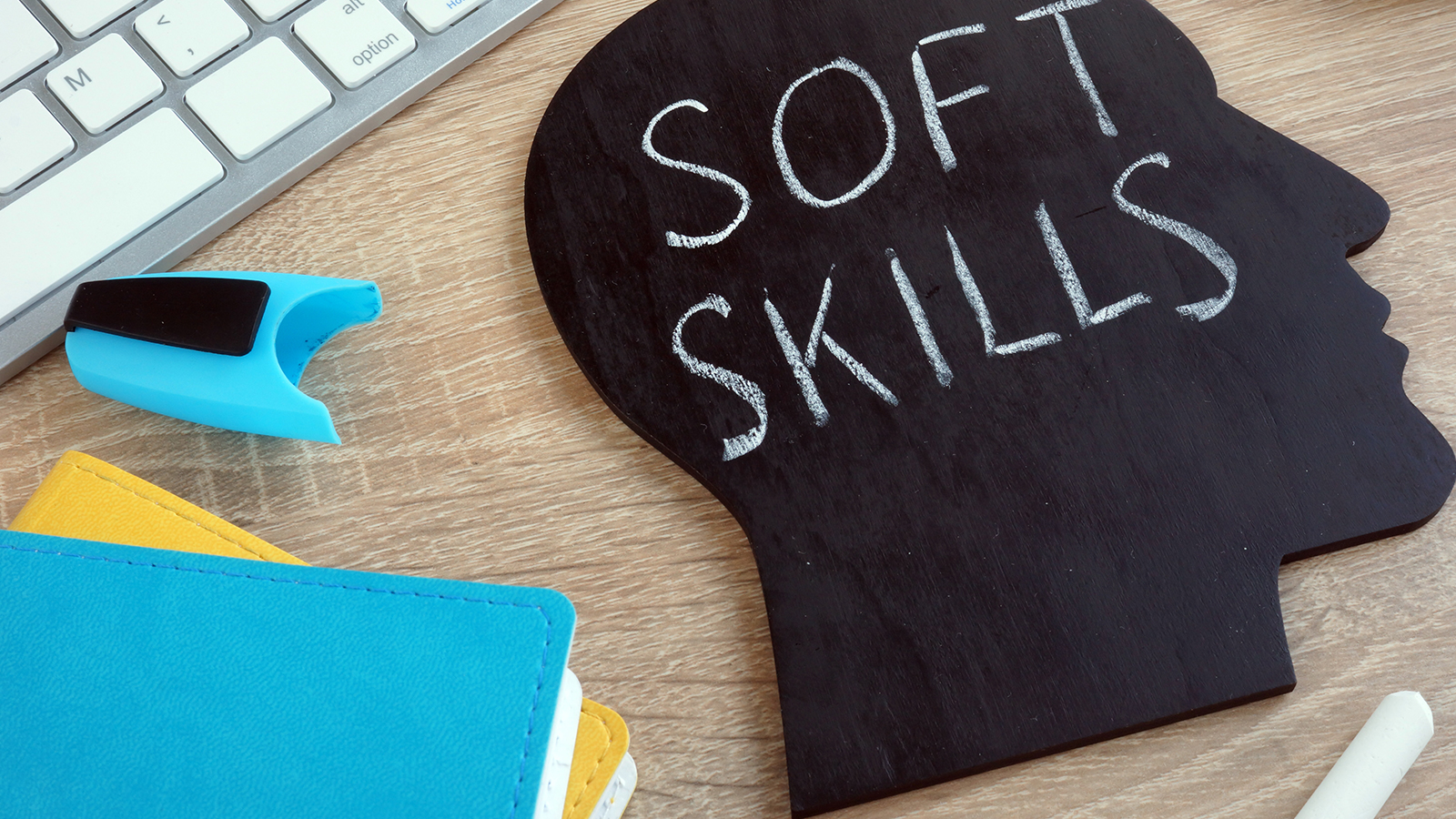
Career development rethought: training soft skills through serious games
Communication and leadership skills are more important than ever, not only in times of virtual teamwork. We show you how you can map learning progress in a meaningful way and give you a summary and an outlook on future developments.

Gamification raises corporate learning to a new level
Many large organisations are already taking advantage of the positive effect of games on learners when it comes to the professional development of their employees. We have taken a closer look at the most common types of games for you.

Contact person
I joined the imc newsroom team in 2021. As a journalist my heart beats for content and storytelling.
I’m excited to figure out how e-learing and digitization affect the future of work.
My task is to create content to talk about and I’m always looking for trends.
Privately I love to travel and eat Tapas.
Topics: E-Learning Trends, Corporate Social Responsibility, Press and Influencer Relations, New Work
The Future Is Now
In the Future of Work series, we look at future-oriented technologies and ideas in the labour market and in professional development. We want to help shaping the change and to talk about tomorrow's topics today. We provide you with thought-provoking impulses and also give you insights into case studies and success models that will positively influence business outcomes in the future.
Every 3 months, we want to discuss with pioneers and visionaries in the "Future of Work" talk about the challenges, but also about new and exciting opportunities that the change in the world of work brings with it.
depends on what you do today.”
― Mahatma Gandhi
The world of work is changing and with it the demands on companies, organisations and their employees. Artificial intelligence, data analytics and robotics will play an increasingly important role in the future. We must continue to develop, and so "lifelong learning" will become a central component of New Work.

Article
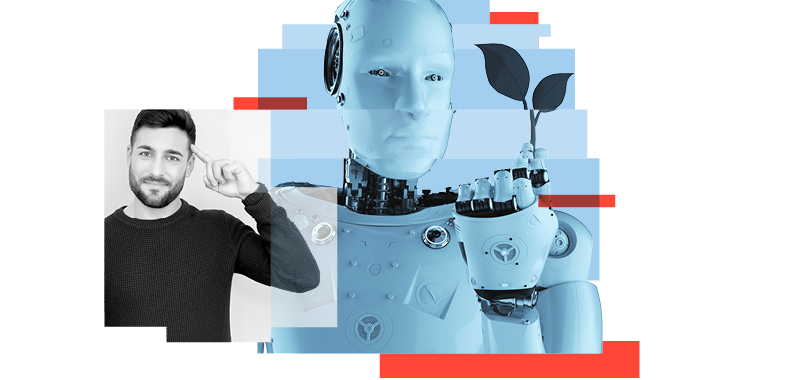
Learning culture nourishes learning ecosystems
“No appointments today – I’m learning.” Is it possible to write that without earning funny looks? Making it possible is a key task for modern companies. Learning and professional development must lose the “necessary evil” or “seminar as a benefit” labels and be anchored as a vital component of corporate culture.

Digital Games and Professional Development
Competence transfer thanks to digital games? It's possible! In an interview with Çiğdem Uzunoğlu, we explain how computer games and continuing education fit together and how they can be used effectively.
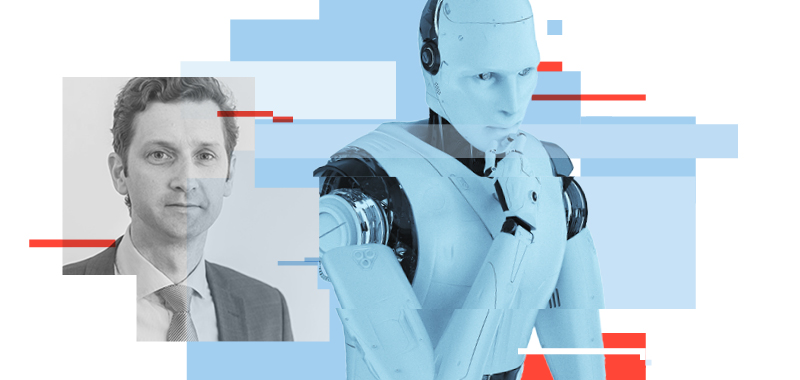
Can Germany afford its current AI scepticism?
Artificial intelligence (AI) is often viewed sceptically in Germany, but often without justification. In this interview with Kristian Schalter, we talk about how future technologies like AI will change our working world and why Germany cannot afford its current AI scepticism in the long term.
Like. Follow. Share.
Discuss the Future of Work with us and become part of the change.
Choose your channel and let's go: like, post, discuss, share and recommend.
Contact person
I joined the imc newsroom team in 2021. As a journalist my heart beats for content and storytelling.
I’m excited to figure out how e-learing and digitization affect the future of work. My task is to create content to talk about and I’m always looking for trends.
Privately I love to travel and eat Tapas.
Topics: E-Learning Trends, Corporate Social Responsibility, Press and Influencer Relations, New Work
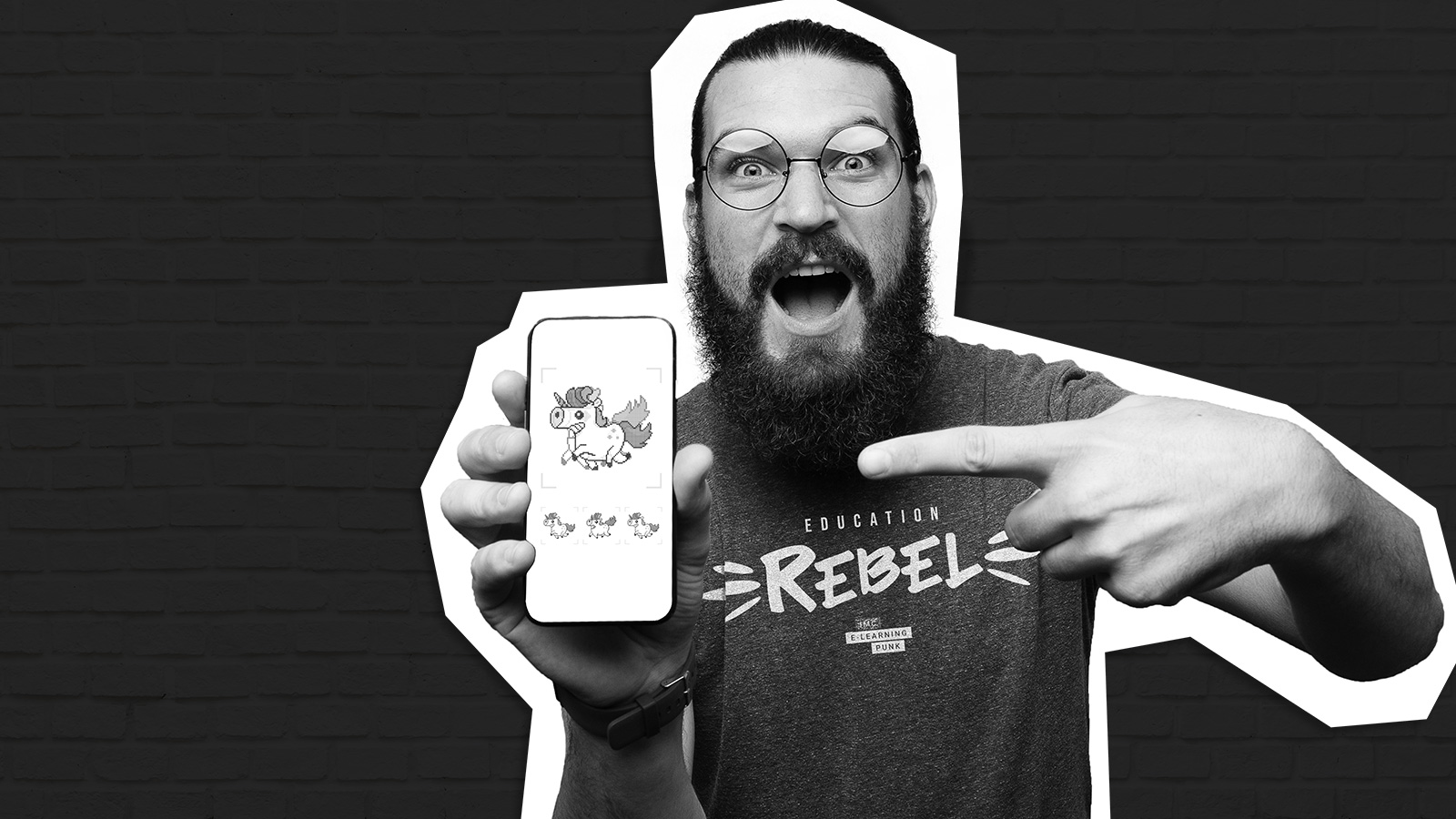
Five tips for more fun with e-learning
The company is offering a new e-learning course – does this still have the unfortunate effect of triggering the same feelings in your learners as their annual reminder to have the plaque removed from their teeth? It doesn't have to! We'll give you tips and tricks on how to make learning more fun by using GIFs.
Basics on the topic of GIFs
The first GIF had already been developed as early as 1987, but the idea of GIFs goes back even further. GIFs are, in fact, comparable to the good old flip book. The rapid flow of several individually drawn graphics creates a moving image for the human eye, basically an extremely short video without sound.

Not quite picture, not quite video: GIF stands for Graphic Interchange Format. GIFs are usually animated short clips without sound.
Even after more than 30 years, GIFs still enjoy great popularity, despite their somewhat dated appearance. The popular moving images are widely used, pixelated and limited colour spectrum notwithstanding, because they can be integrated almost anywhere and are easy to create and share. What’s more: Our digital communications, whether on Twitter, WhatsApp or Teams, would certainly be a lot less entertaining and descriptive without GIFs. Speechless? No problem! Joy, sadness, compassion, shame – no matter what feeling you want to convey, you can always find a GIF for it.
Good reasons for using GIFs in learning
Social media is not the only place for GIFs. They can also make learning more vivid and entertaining. We have compiled the most important arguments for the use of GIFs in e-learning for you:
- GIFs visually represent ideas and information in a few seconds
- A GIF is easier to follow than a series of still images
- GIFs usually run in a loop and are also perceived out of the corner of the eye
- GIFs therefore do justice to the attention span of Generation Goldfish (<8 seconds)
- Creating GIFs is much easier than creating high-end video content
- GIFs play automatically on almost any system
- GIFs trigger emotions. The stronger the emotion, the better the memory
- GIFs are mobile-friendly and ideal for micro-learning
tips for more GIF Ingenuity
The use of GIFs in e-learning offers several advantages. Use these short, vivid clips, for example, to make a step-by-step tutorial more entertaining, reinforce a key message, provide feedback, or make comparisons. We have summarised the most important tips for using GIFs in digital training courses for you below:
Tip 1: Offer your goldfish entertainment
Technological progress brings many opportunities and possibilities along with it, but at the same time, it is blamed for decreasing attention spans. You can counter that with GIFs. A good GIF attracts attention and triggers emotions, thus ensuring long-term retention. Boring, colourless GIFs reduce these effects.

Tip 2: No information overload
A rule of thumb should be: Only one theme per GIF. The individual short clips should not be longer than ten seconds and should be intuitively comprehensible. After all, true GIF genius is about explaining even complex facts in a simple and entertaining way (see point 1!).
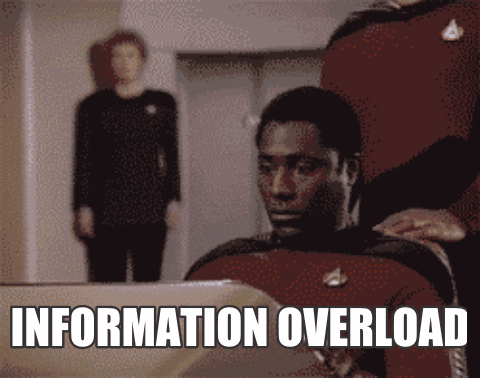
Tip 3: Don't become Robin Hood. Or: No stealing for a good cause
Besides the popular genre of animal GIFs (keyword cat content), ultra short film scenes make particularly popular GIFs. Before you use a GIF like this from the Internet for your online training courses, however, make sure that you are not violating any copyrights.

Tip 4: Not everyone is familiar with Harry Potter
Consider the cultural background and age of your target audience. For example, if you use a meme from a film, ask yourself: Is my target audience likely to know the film? If a GIF is not clear and understandable, its positive learning effect is significantly reduced.
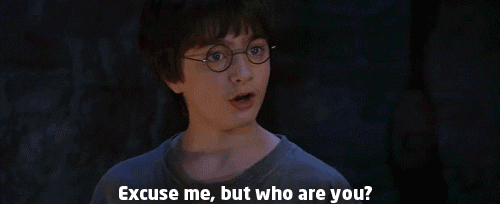
Tip 5: And the Oscar goes to... Hire a good protagonist
Do you have a recurring character in your other online training courses? Then provide your learners with a common thread and create GIFs with that character as well, for example, to provide feedback on a digital query. Passed the test? -> Rejoicing & Applause. Didn't pass the test? -> Sad face.

During an in-house imc BarCamp, Instructional Designer Stephan Urbanski and Senior Developer Frédéric Macchi presented a more detailed look at the potential of GIFs in the context of learning. The following sketchnote summarises the results of the session and all the important facts about learning with GIFs:
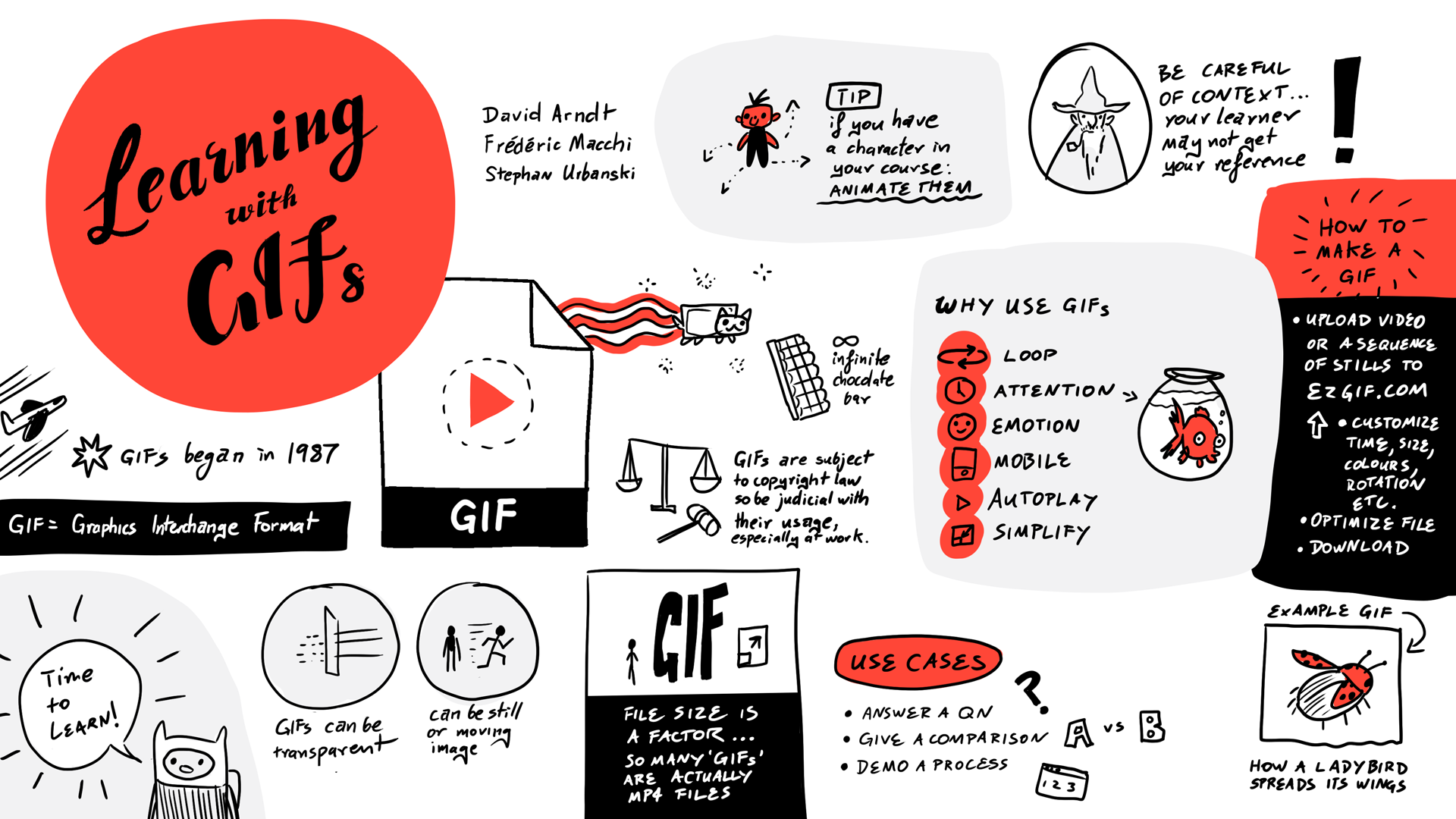
Contact person

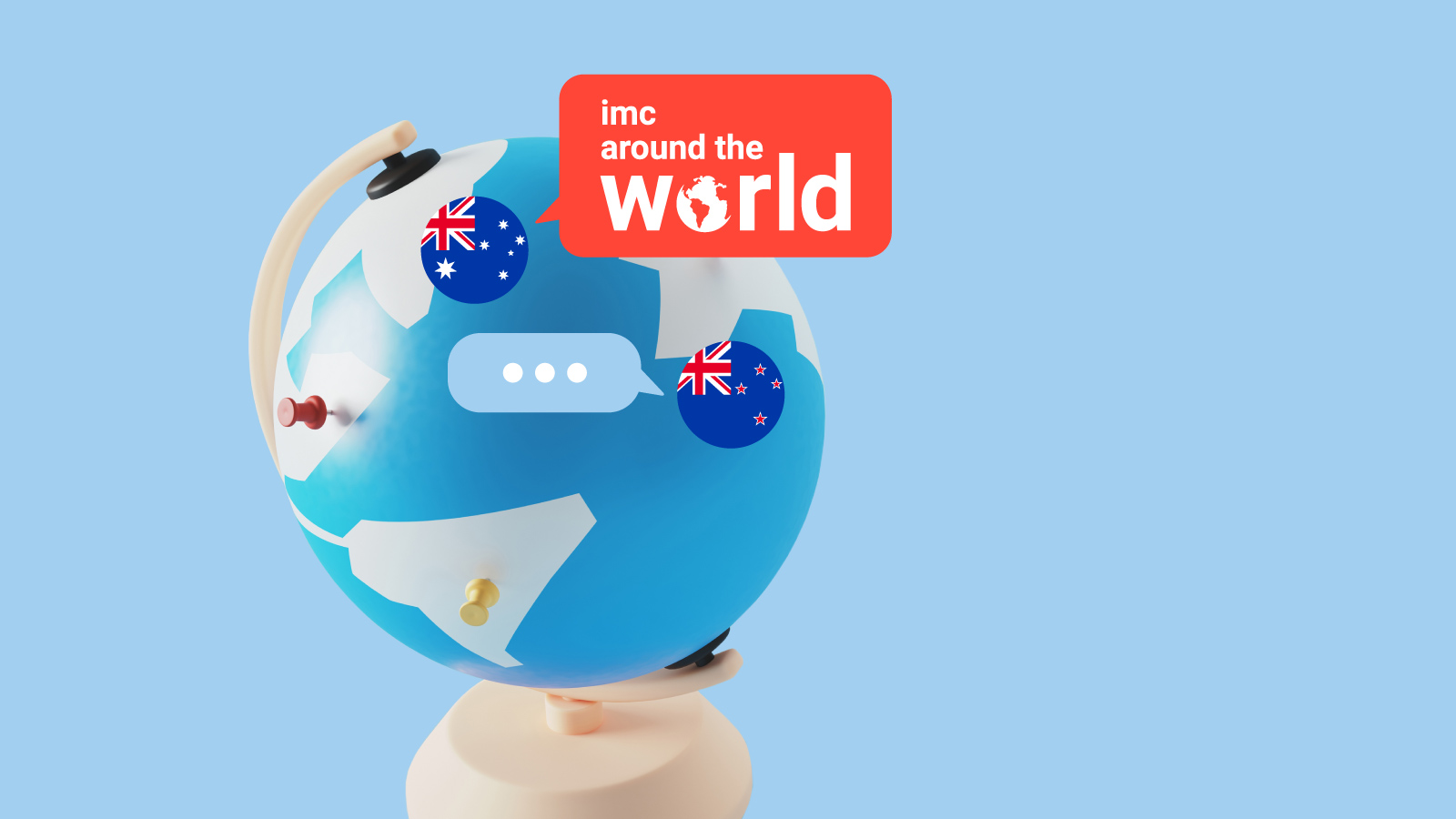
Shaping the new world of Corporate Learning in 2021
Our series of articles from imc employees all over the world started in Switzerland. In this episode we take you to the other side of the world. Daniel Antman, Director imc Australia, has joined imc in February 2020 and had to face special challenges right from the start. In this guest article he talks about his experiences, lessons learned but also chances and possibilities for the Australian e-learning marketing in 2021.

Daniel Antman, imc
The digital transformation of learning is having an immediate and notable impact on business performance. Companies will need to redefine their organisation’s learning and development strategy in 2021 to ensure alignment with their revenue and growth objectives.
As we approach the end of what can only be described as a tumultuous 2020 and look forward to 2021, the dominant behaviours that will define success are adaptability, nimbleness and alignment.
Many businesses are going through their 2021 strategic planning right now and some who may have already completed their plans, are going back to revisit them to ensure they are relevant to the probable long-term structural changes we have seen.
From a macro perspective we see a relatively stable outlook for both Australia and New Zealand. We have a well-capitalised banking sector that has proven its resilience in throughout both the global financial crisis and more recently through the pandemic.
At the national levels both economies have relatively low debt levels to GDP (compared to other western economies) ensuring there are tools in the fiscal cabinet for government (Federal and State) to implement stimulus programs to keep the economy moving. We have unprecedented low interest rates that have kept both consumer spending and the housing market at acceptable levels throughout this 2020 Covid impacted year.
We have also not yet seen the expected spike in unemployment. While the expectation is that the peak in unemployment won’t be seen until Q1 2021, there is a quite confidence it may not be as bad as originally predicted. The jobkeeper program (a federal government initiative that has ensured workers impacted by a shut-down in their sectors retain an income) has steadied the economic ship and minimised the impacts of the covid shut-downs.
Perversely we think there may be upside in the dislocation of people from their traditional jobs and professions as they potentially return to the workforce in different industries. The movement of people into new roles and businesses should in theory bring into focus the need for more and effective training.
We have seen a significant uptick in employment with some of our clients in the public sector who have absorbed a number of displaced workers. For example, we have seen a consistent increase in demand for our content services from DHHS (Department of Health & Human Services) who have been actively expanding throughout the covid crisis.
There is also a sense the language of business is changing. A few months ago people in business were still saying “when things go back to normal we’ll do this and that”. Now the rhetoric is changing.
There is greater recognition, at least empirical recognition, that we are probably going to be forever spinning on a new axis. Think back to the 2011 powerful earthquake that moved the main island of Japan by 8 feet and shifted the Earth on its axis. It’s where we are at in terms of the business landscape too – spinning in a different place and probably never going back.
We also rethinking the way businesses are segmented in Australia/New Zealand corporate market. While businesses can be easily bucketed into defined categories, for example financial services or utilities, from a learning perspective we see them grouped differently. Specifically, we see the local corporate landscape being defined as entities that are:
- Membership orientated (e.g professional associations like ACCA and AusIMM)
- Exposed (e.g those heavily impacted by regulation/compliance like financial institutions)
- Complex (e.g dynamic entities who requires a deep and complex solutions that brings their organisation together like a pharma business)
- Challenged (e.g Organisations who have experienced significant and complex growth pains and have been forced to evolve due to late adoption)
- Branded (e.g Organisations who have a brand promise to uphold and deliver like Blackmores)
It is true that an entity may take on more than one of the above characteristics yet they typically have a bias to one. The importance of understanding this in the Australian context is that learning and development will mean different things to entities where there are different bias’s. That requires our communication, business development and marketing to be bespoke and identifiable to them.
Within each of these business personas are the decision makers and, when it comes to aligning the concept of learning with business objectives, they will be motivated by different things. While these are not new concepts (in terms of how decision makers can be categorised), we are seeing the emergence of clearer definitions of who the decision makers are in the types of organisations noted above.
In other words, it’s a bit of a match-and-mix matrix between the type of organisation and the decision makers. As the concept of employee development, training and motivation in a remote working environment continues to unfold, decision makers will need to be swayed by targeted and relevant messaging about the role of learning and how the empowerment of their people is directly connected to business performance.
These decision makers can be broadly classified as one of:
The Charismatic - decision makers with big ideas and proven results that speak to the bottom line and keep my company competitive.
The Thinker - Intelligent, low-risk solutions that save time and money.
The Sceptical - Ground-breaking ideas with people I can trust.
The Follower - The best ideas have been tried and tested by big brands.
The Controlling - Highly structured arguments that fit like a glove.
Adaptability and Speed Are Key

We’ve seen many examples of businesses having to adapt to this new business as ‘unusual’ environment. In a learning context, we’ve seen companies pivoting from delivering in-house training sessions, offsite sales conventions and other forms of in-person professional development to a full digital delivery format.
Those who have adapted quickly may well be best positioned to capitalise on the ongoing benefits of digital learning. It’s one thing to adapt, it’s another thing to do it efficiently and effectively. Again, in a learning context, those businesses who have been fast and adept at embracing new delivery mediums are having more success in maintaining effective connections with staff and key stakeholders.
Aligning Learning Strategy to The Digital Generation
Aligning the delivery of quick, effective and meaningful knowledge-transfer with the commercial/performance imperatives of the business has never been more critical. For many astute business people, the current climate has highlighted the critical importance of knowledge transfer and learning to drive increased engagement with staff and other stakeholders including customers.
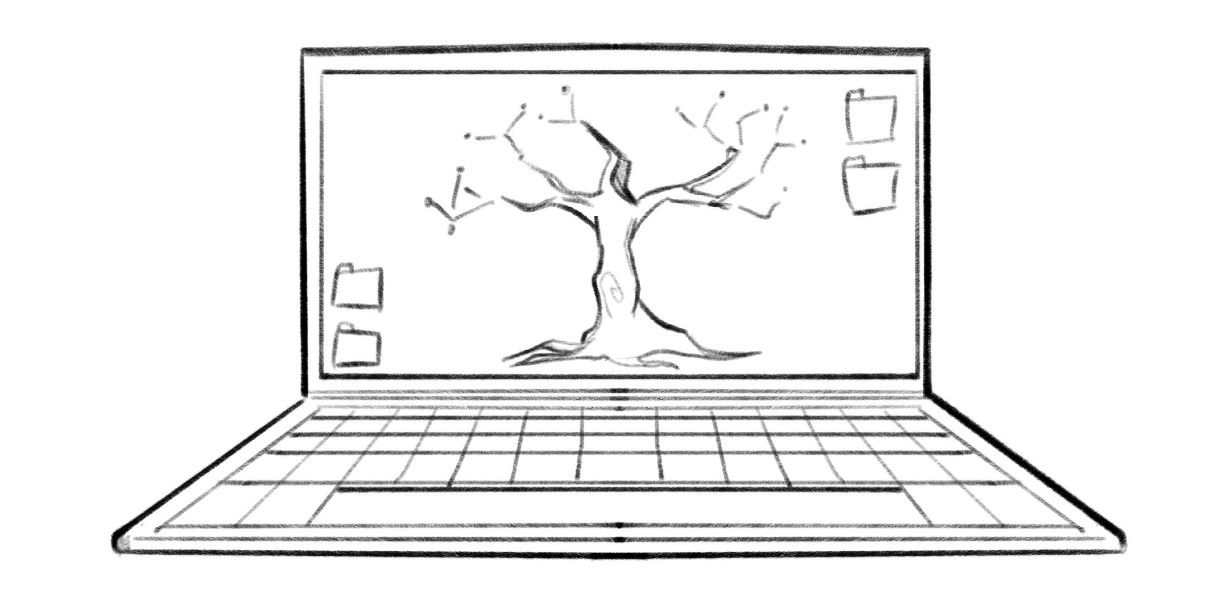
Stable, well trained and stimulated employees translate directly to the bottom line. Well-developed and informed customers/stakeholders become advocates for businesses.
A recent LinkedIn research study identified the primary driver that connected Millennials and Gen Zs to the organisations they worked for was development. Not pay or work conditions, but development.
For organisations who see themselves as genuine learning businesses, and who are committed to developing and growing their teams, their time has come. They are embracing the technologies that will enable them to deliver the learning that is valued by those seeking the development, support and care.
Happy, stimulated, developing and supported employees are those more likely to stay and contribute to ongoing success - something every C-Suite and/or senior manager needs to keep in mind.
Virtual Conferencing Tools and Learning

Throughout the crisis of 2020 businesses have turned to and utilised connectivity tools including Zoom, GoToMeeting and Teams to mention a few. In many respects these tools have been a communication lifeline for business. Yet on their own they are not learning, training or development tools.
Genuine learning that is impactful, sustainable and measurable needs to be expertly designed to ensure it delivers the desired outcomes through the chosen delivery platform. Virtual conferencing tools can and often do play an important part in a blended learning environment. However, they are not designed to be alternatives to expertly designed and delivered learning platforms.
Would You Like Cake & Coffee with Your Training?
Are those days gone? No longer can businesses rely on the attraction of food and drink to encourage staff to join the in-house training sessions in the communal meeting rooms. Nor can they rely on trips to the local café which doubled up as the overflow meeting room when the office facilities were booked.

Yet the challenges that 2020 have thrown out open the opportunity for innovation and out-of-the-box thinking when it comes to learning. The sophistication and power of technology driven learning platforms offer businesses with exciting possibilities to deliver knowledge in a way that can be a genuine game-changer.
Learning, training and knowledge-transfer are no longer the sole domain of the HR or Learning Development teams. They should be a focal point for the C-suite and boards when considering how to leverage digital learning platforms to develop, stimulate and ultimately retain the people they rely on to meet their business objectives.
Contact
I’ve been a member of the imc crew since February 2019. My multi-faceted tasks always keep me on the go. In addition to my work on corporate brand, marketing and communication strategies and employer branding, I also delve into the operational side.
I have a passion for networks and communities. That is why I represent the brand ambassador programme in the editorial team. I am also actively involved in the SCHULEWIRTSCHAFT (School-Business) network.
Privately, my big passions are travelling, Disney and interior design.


